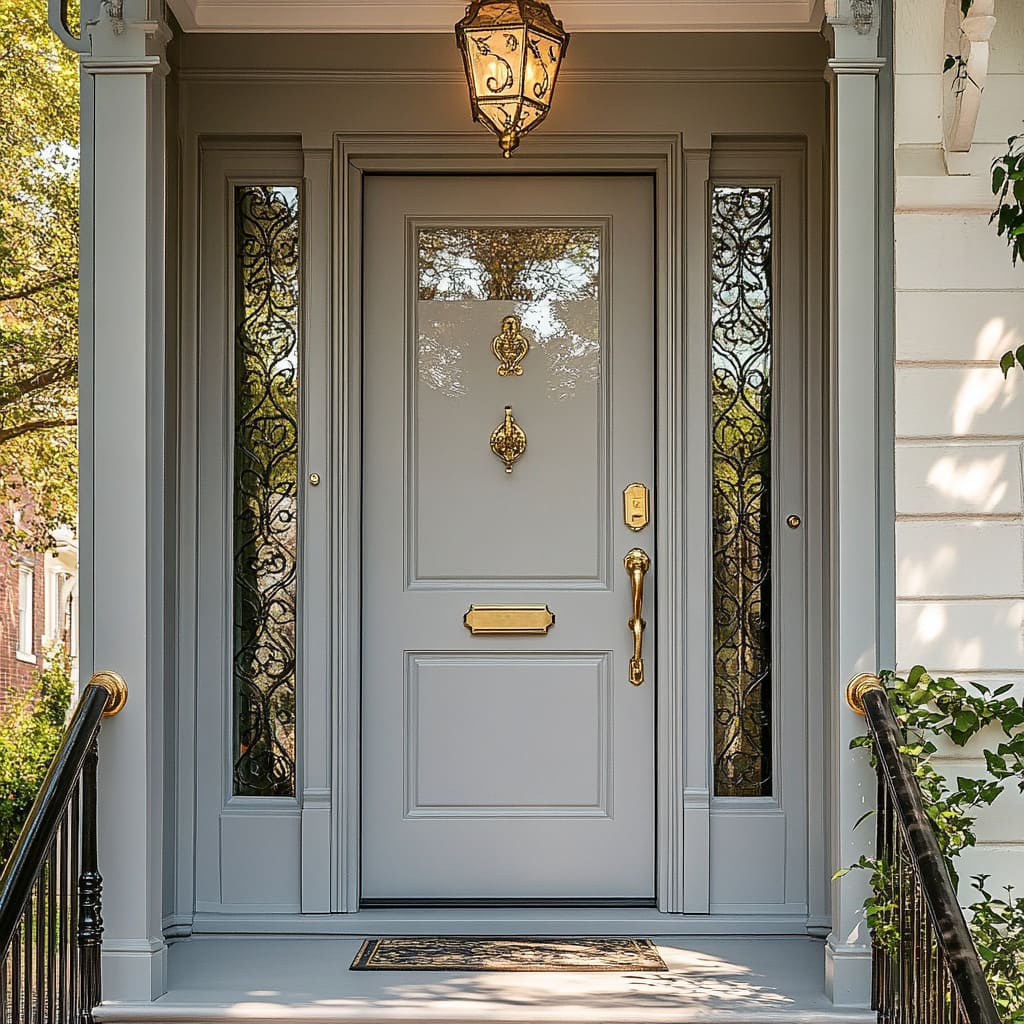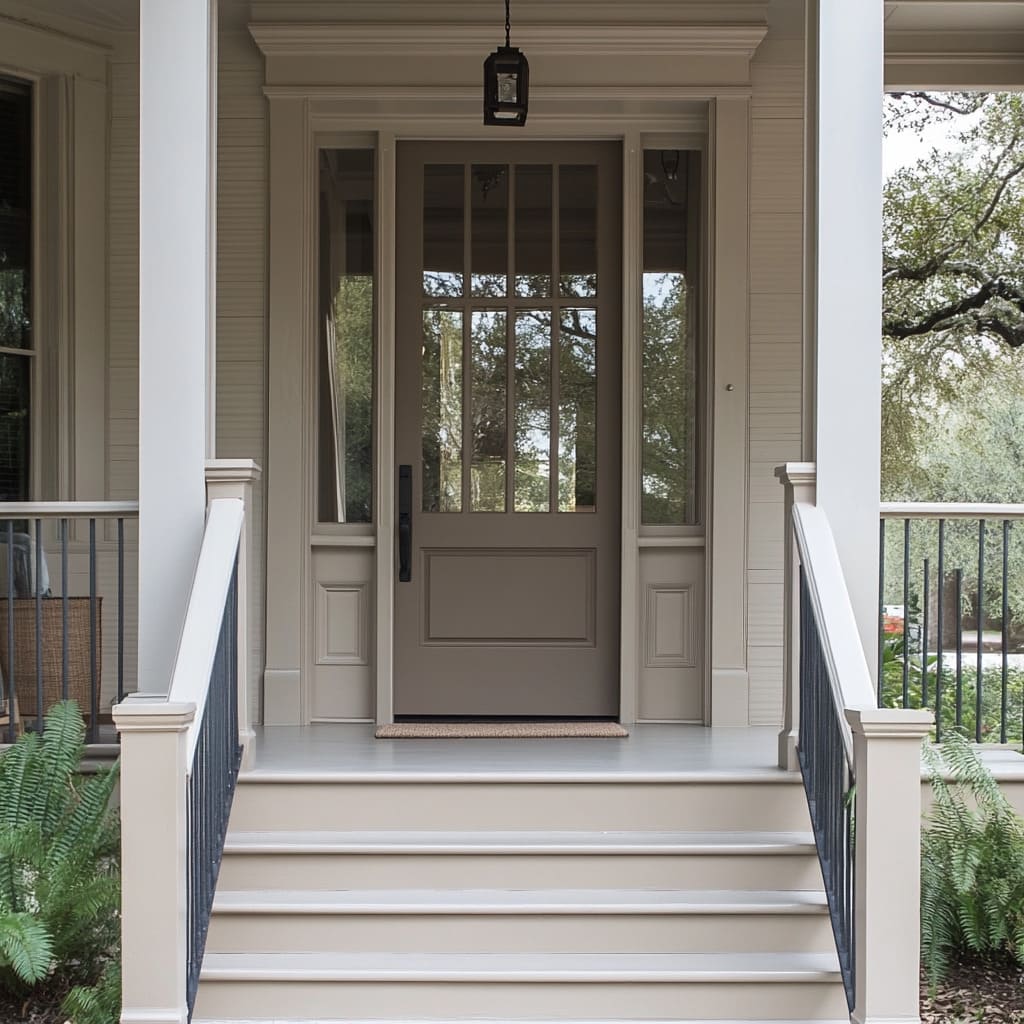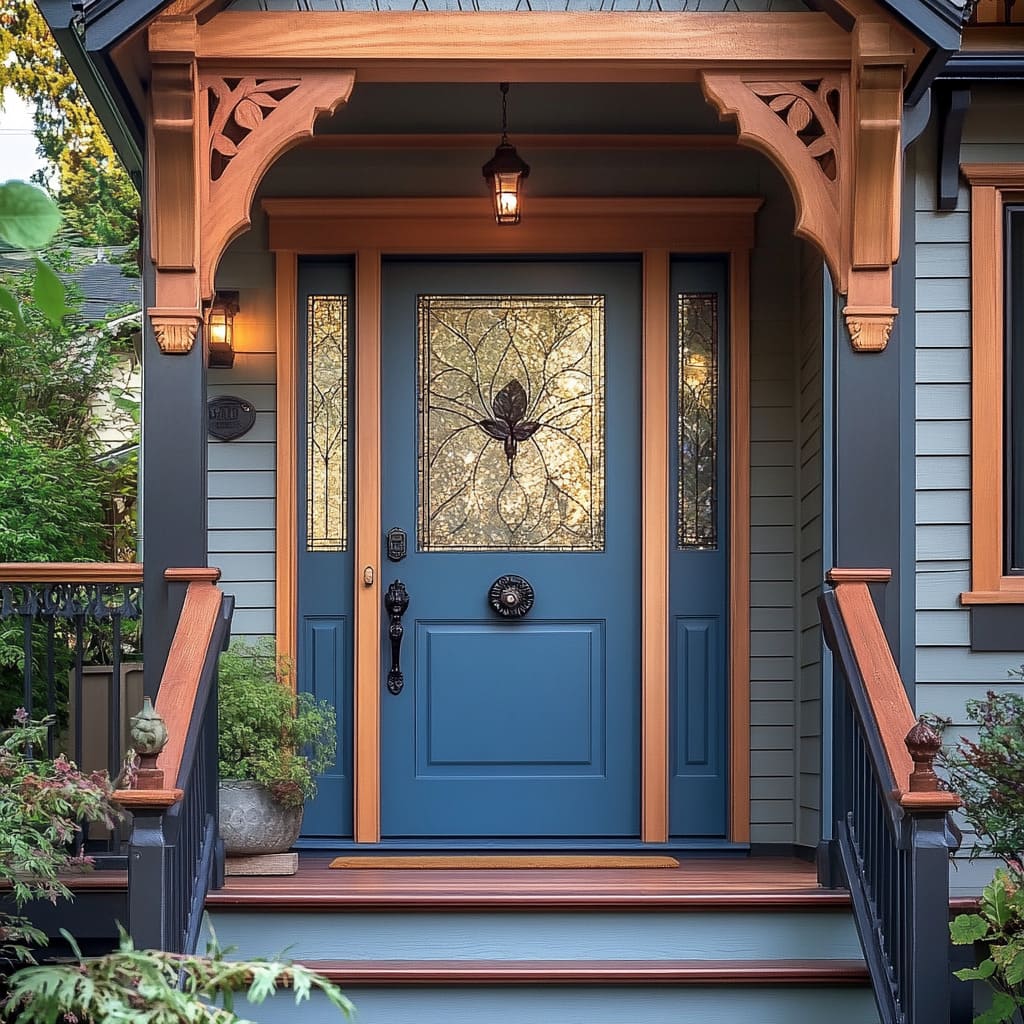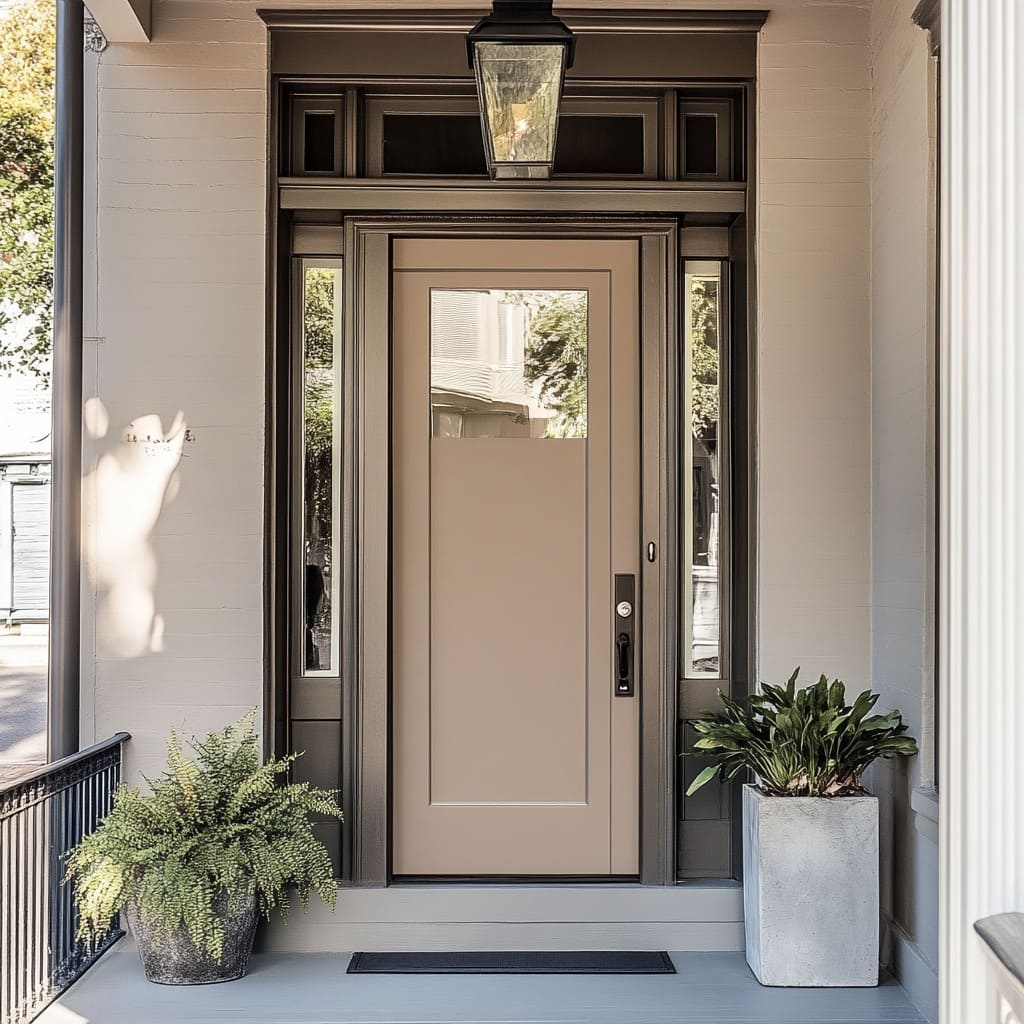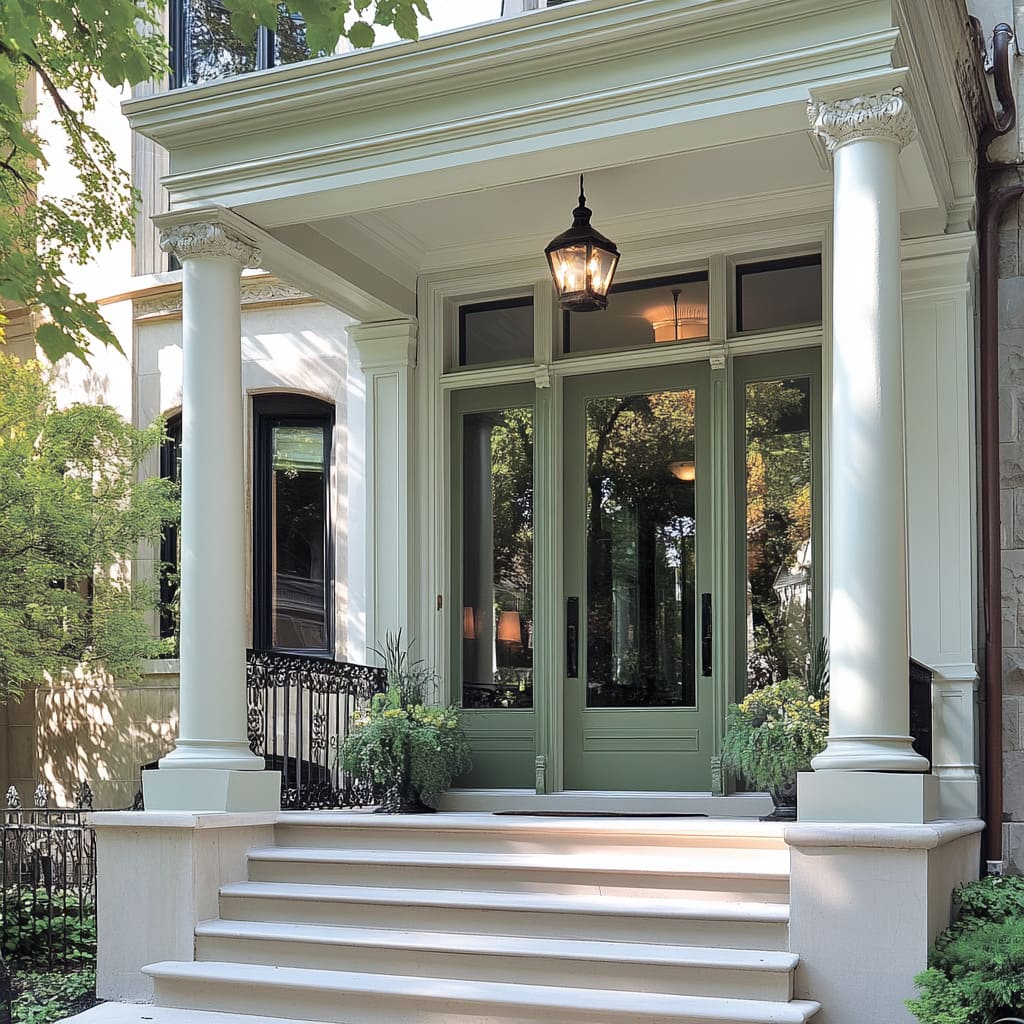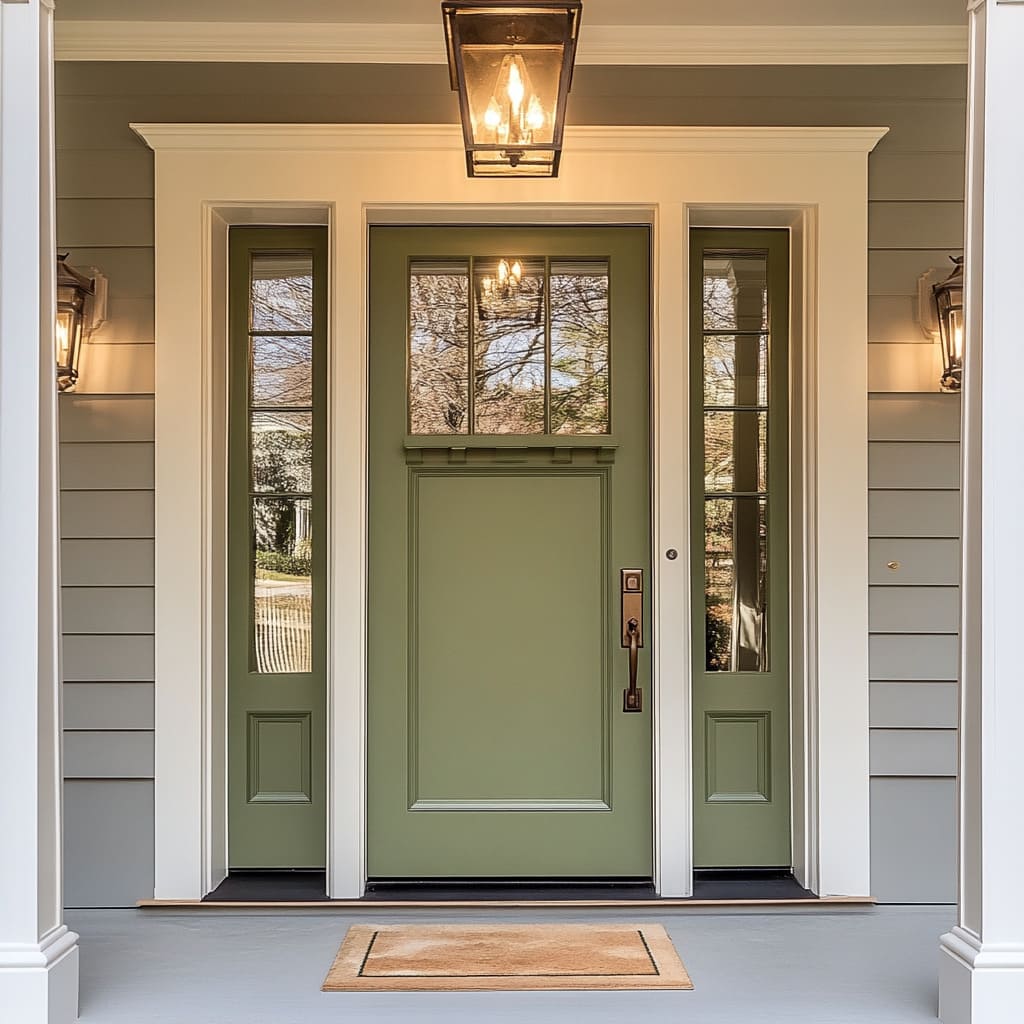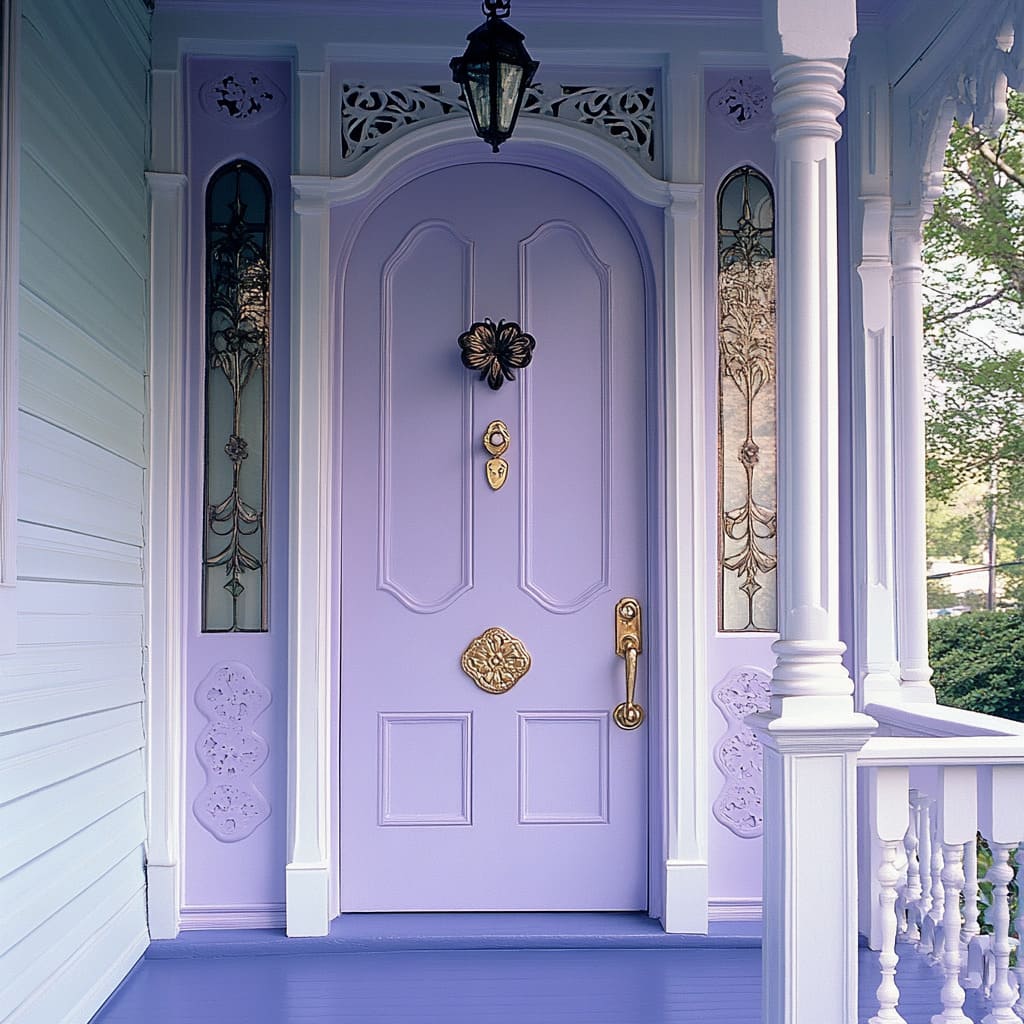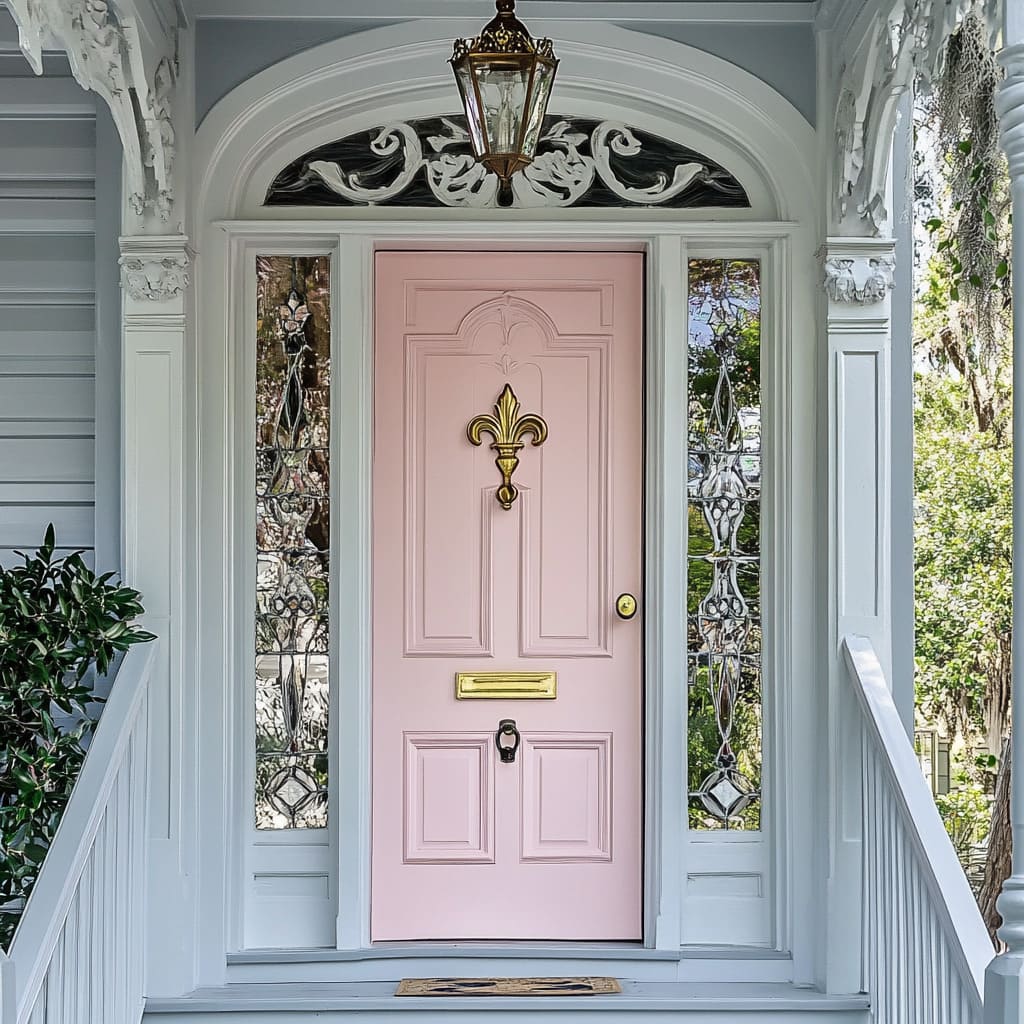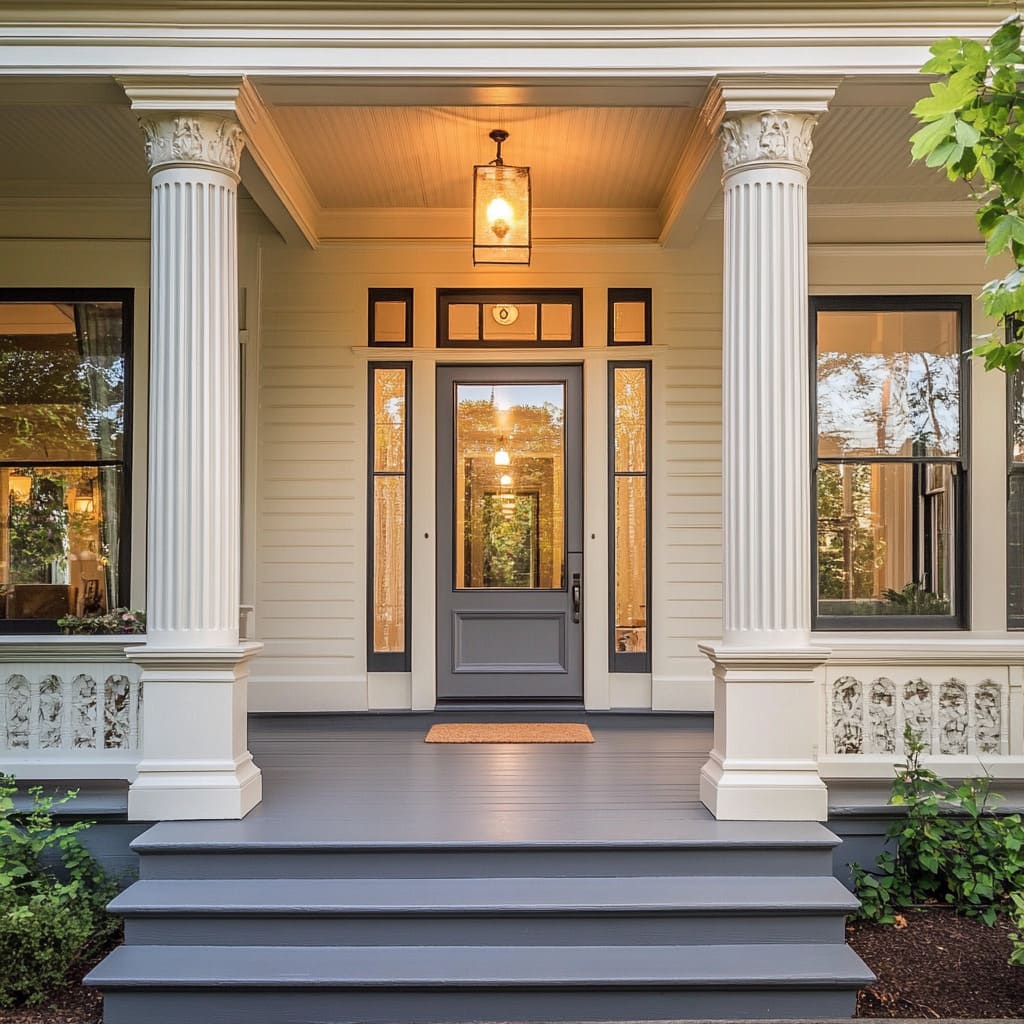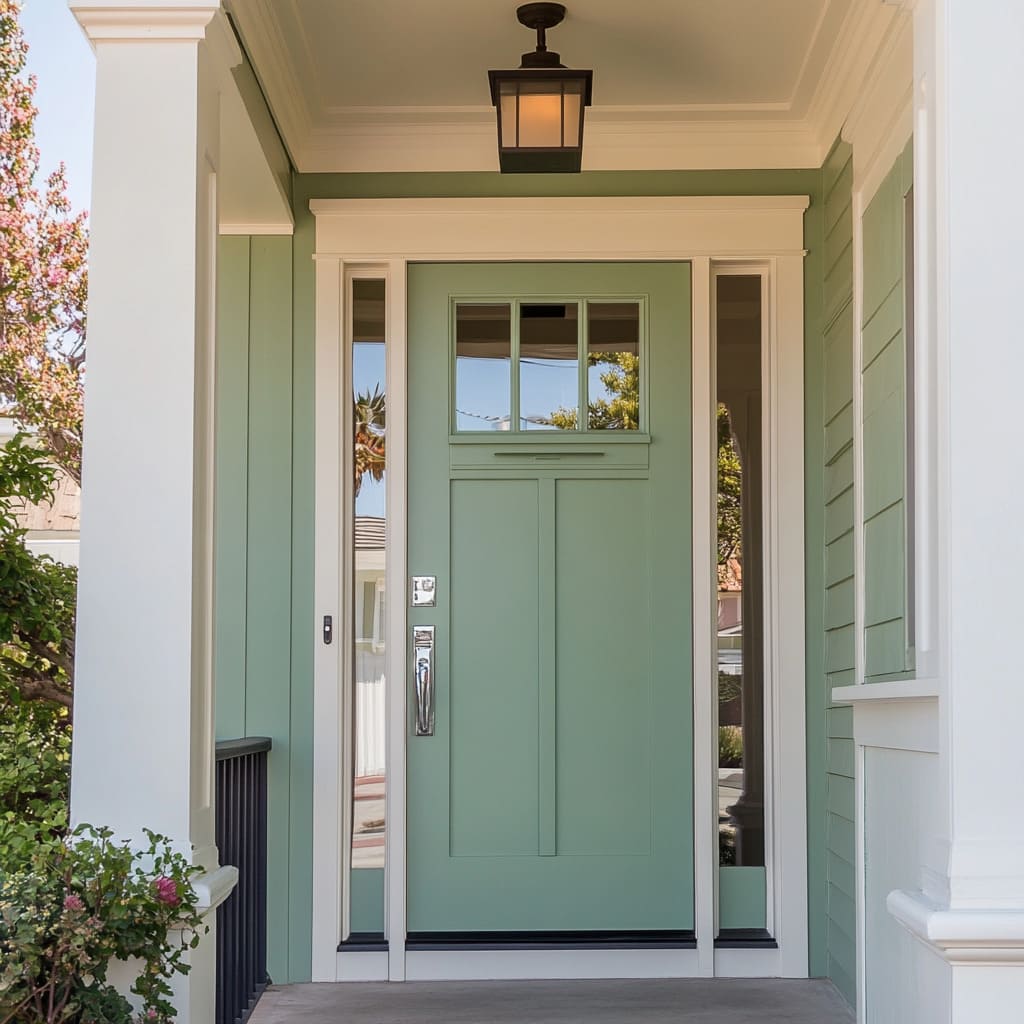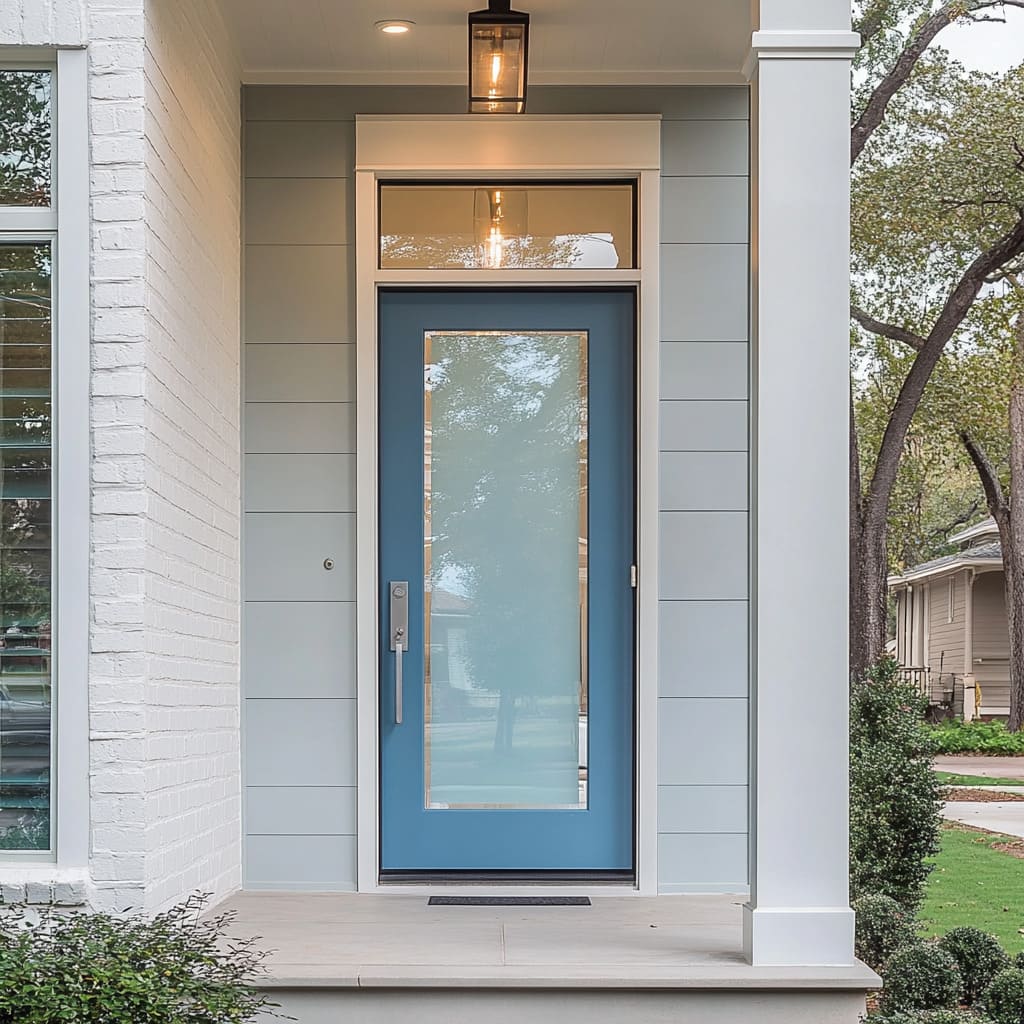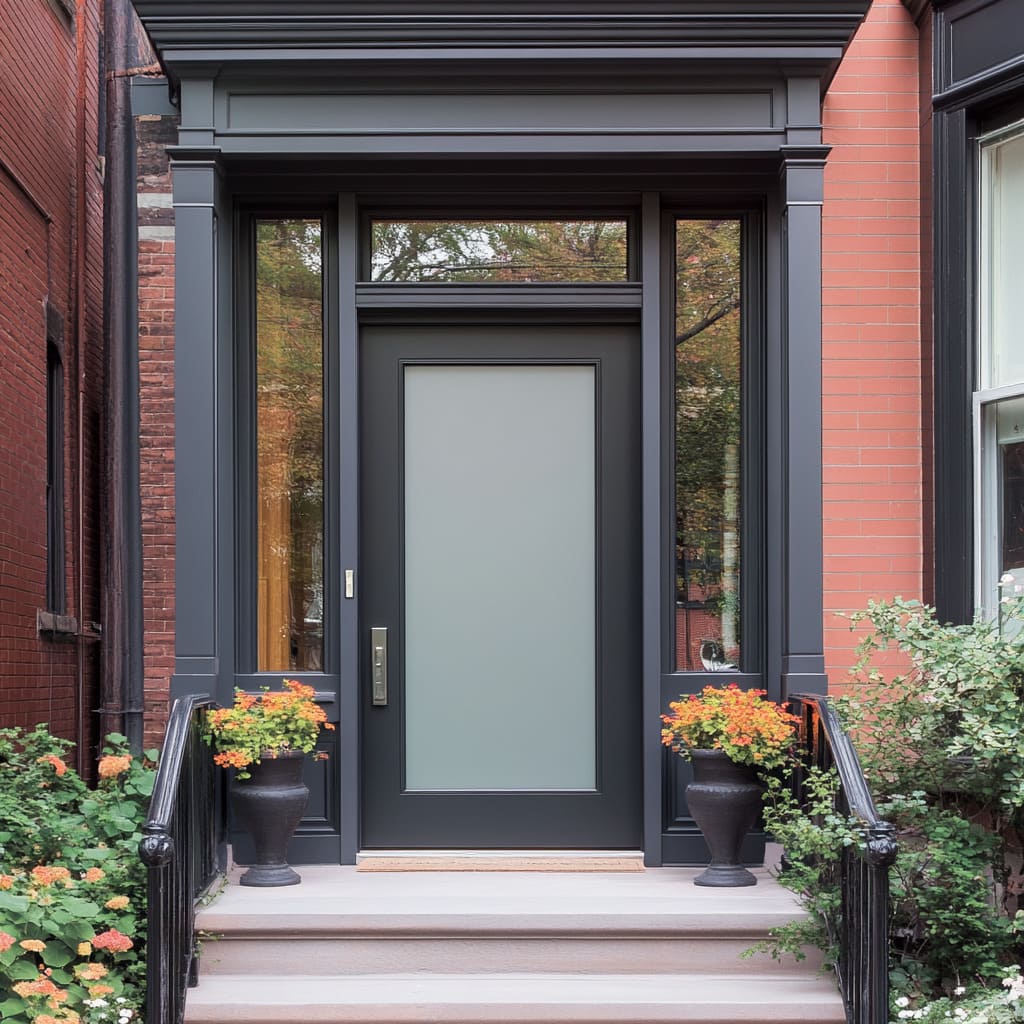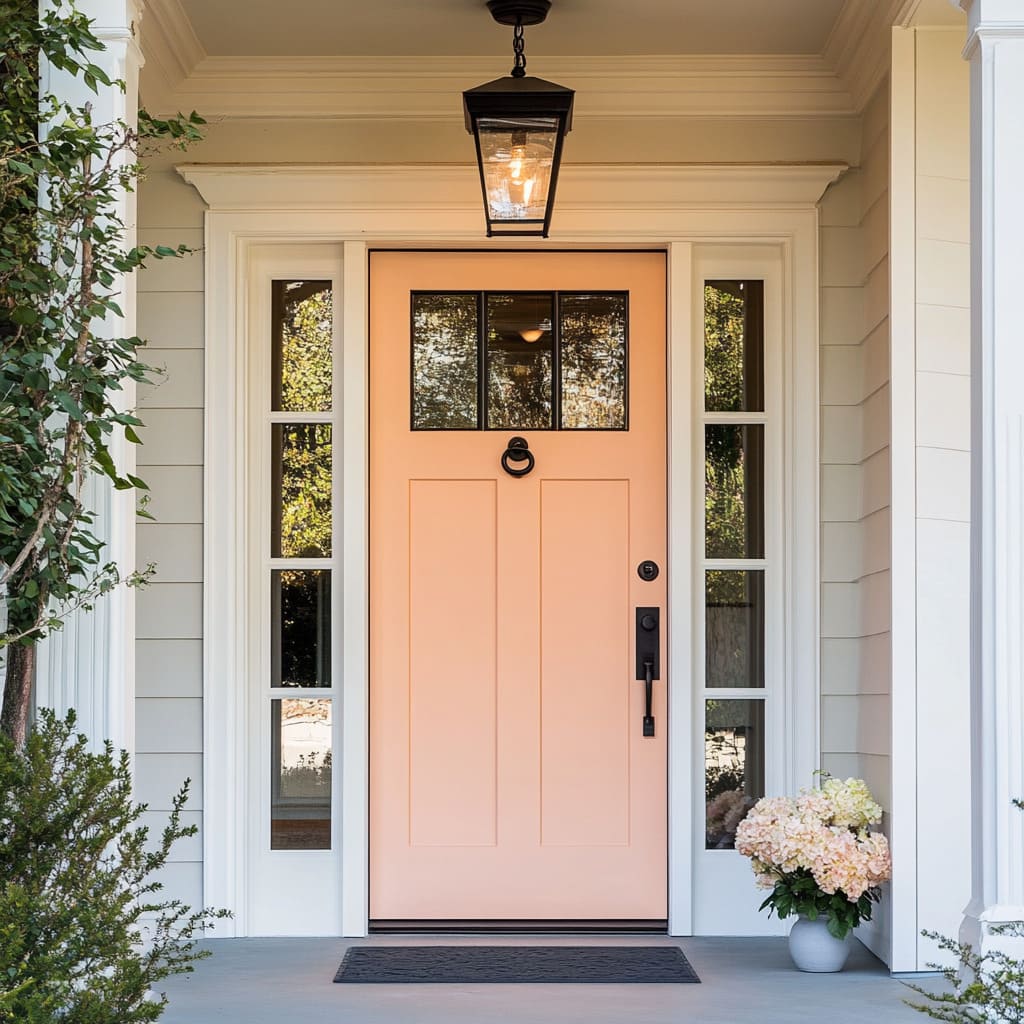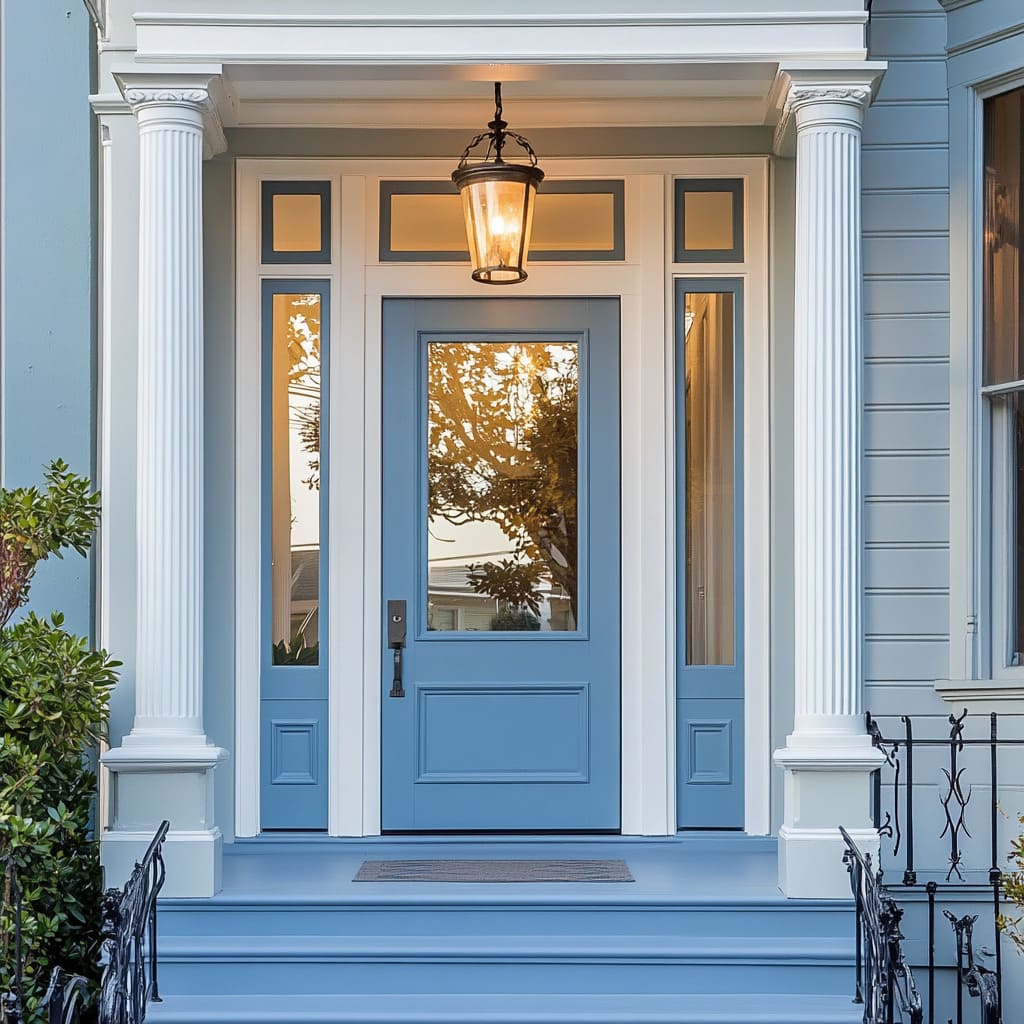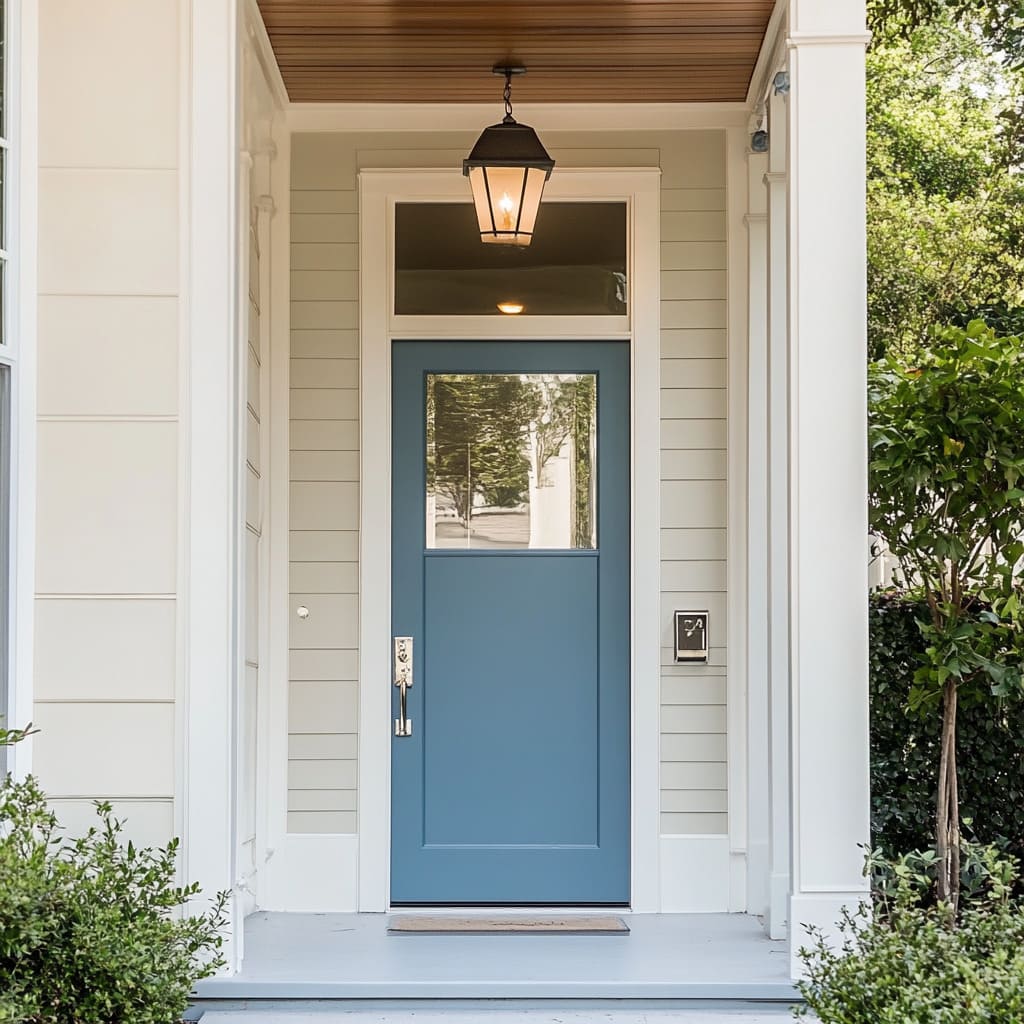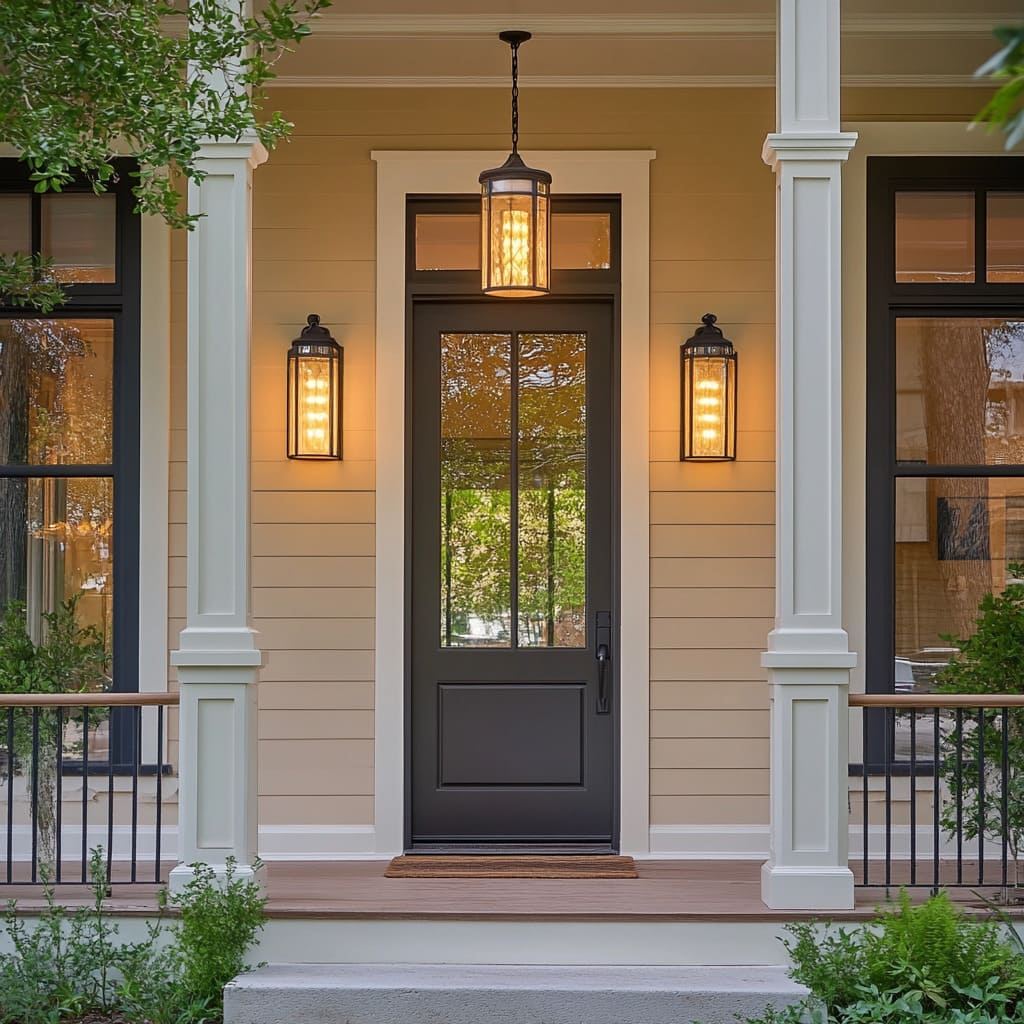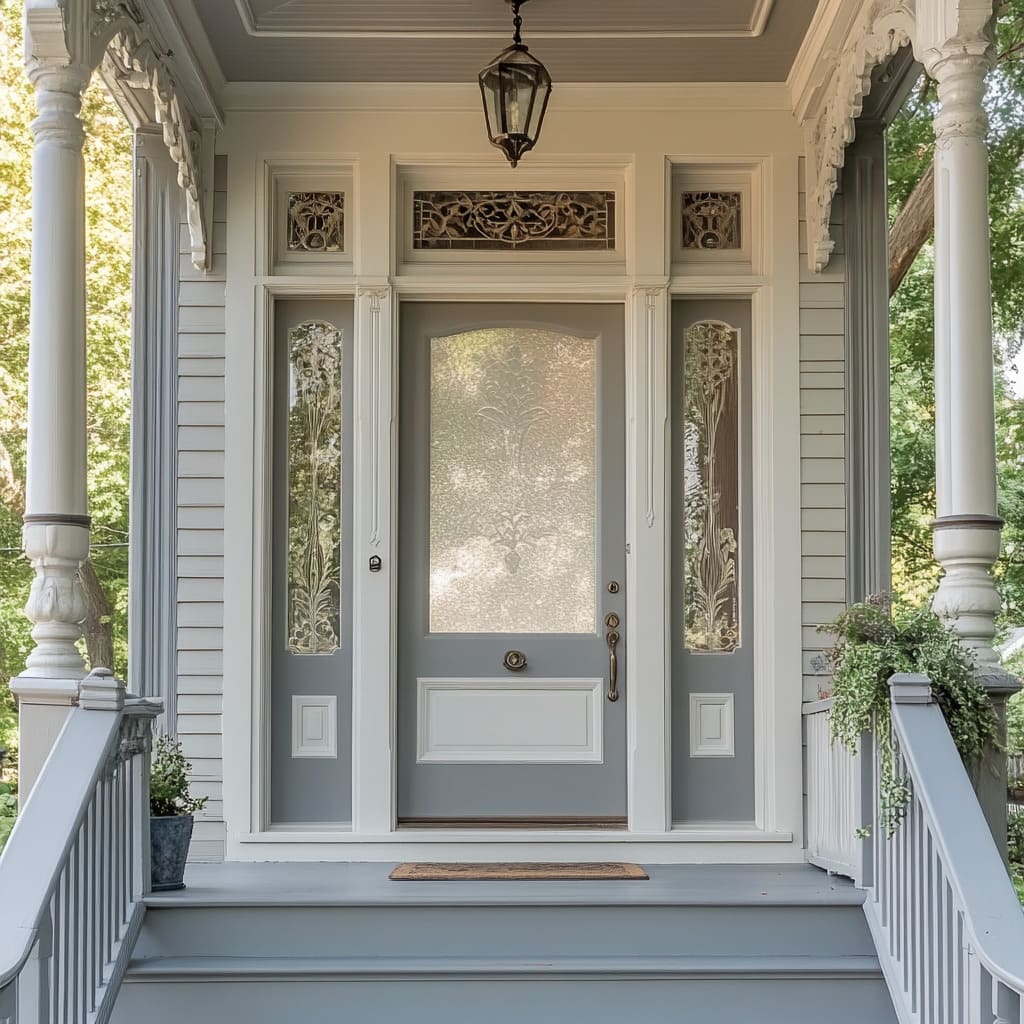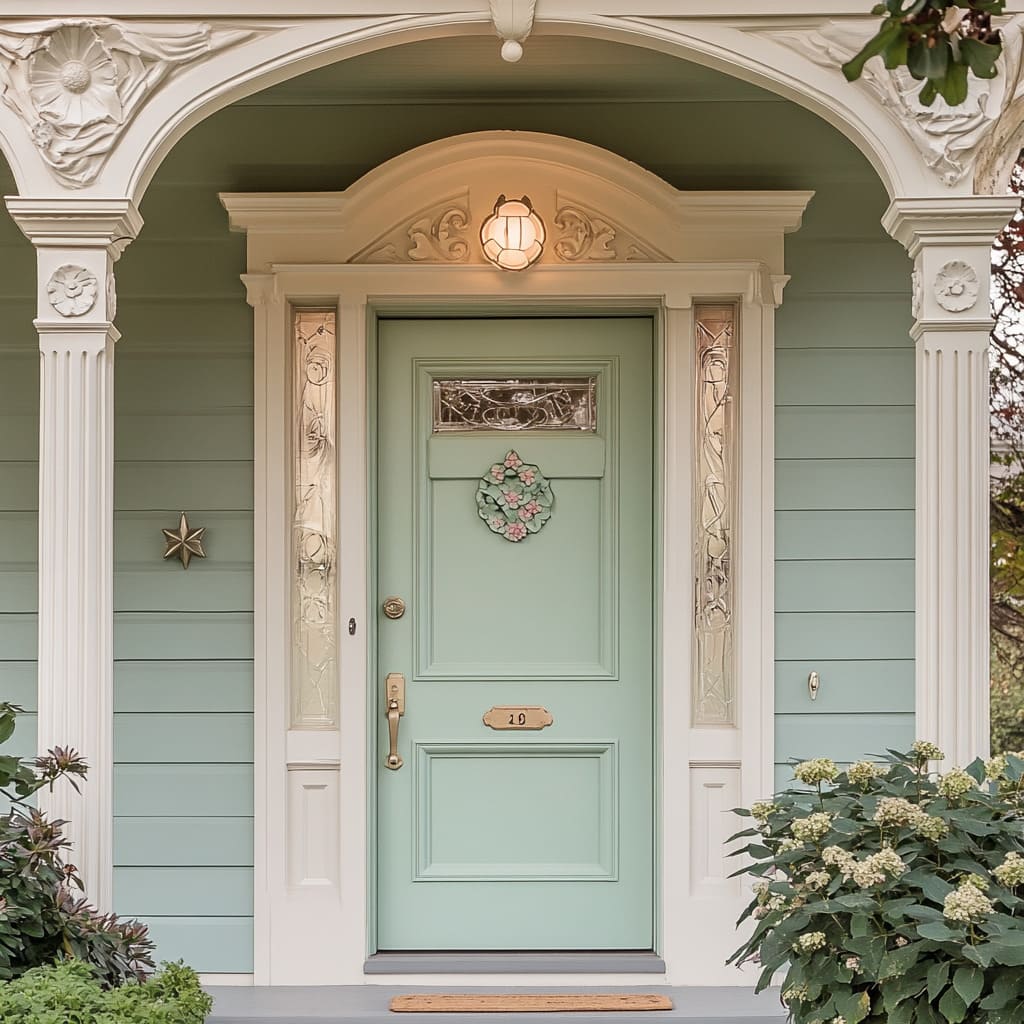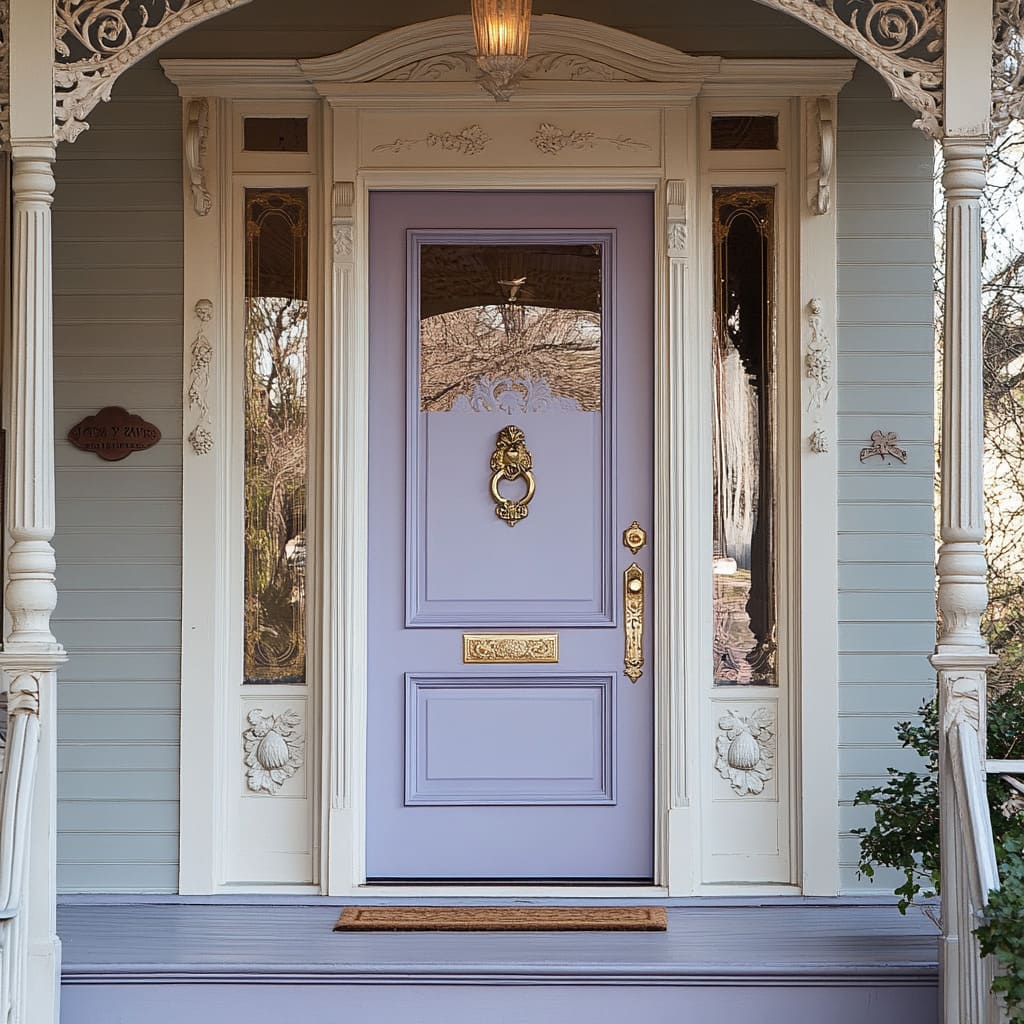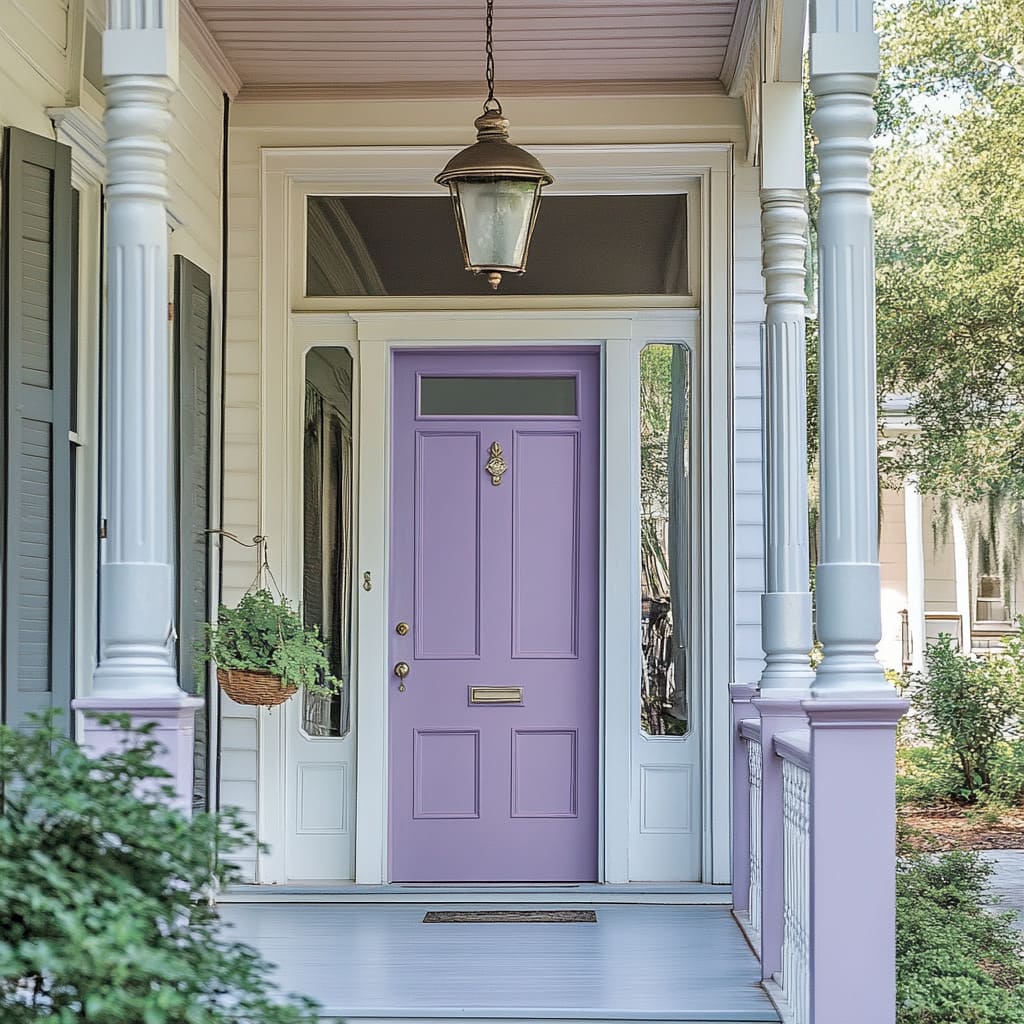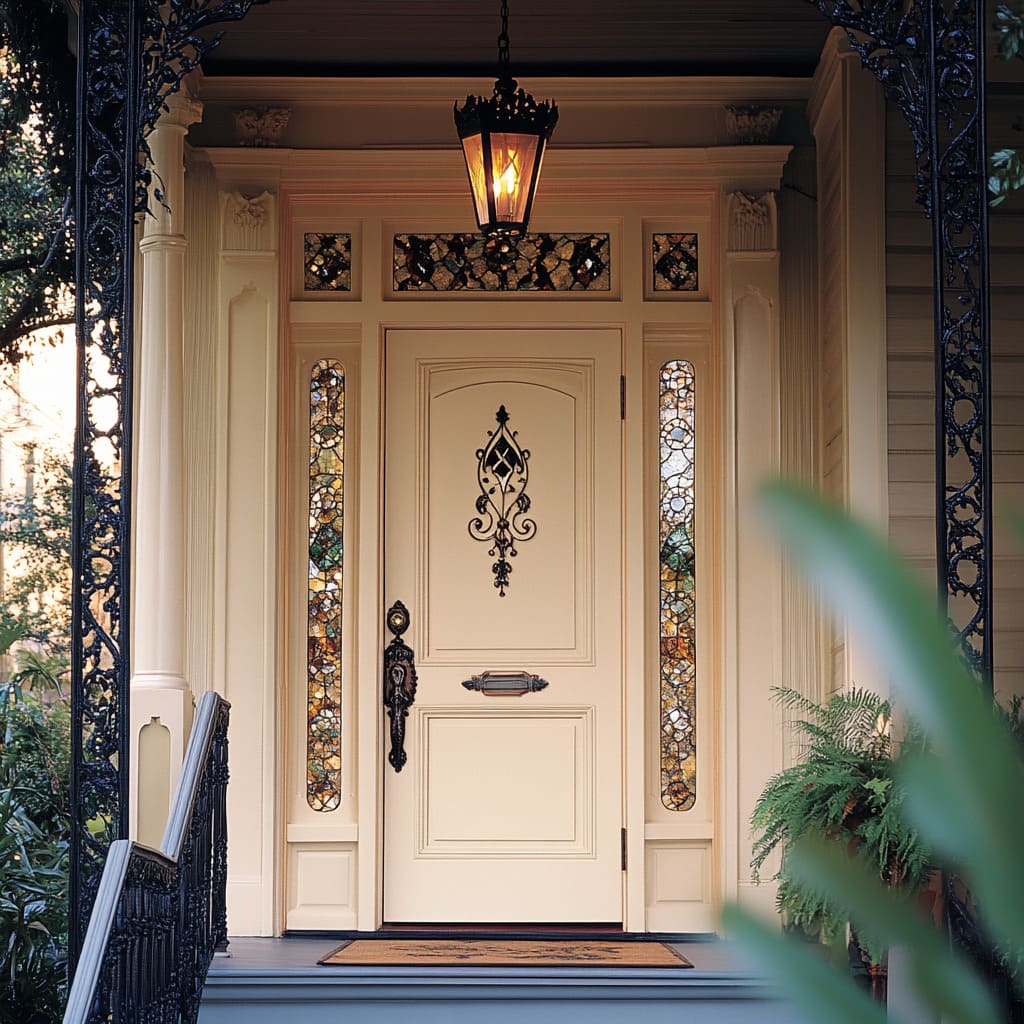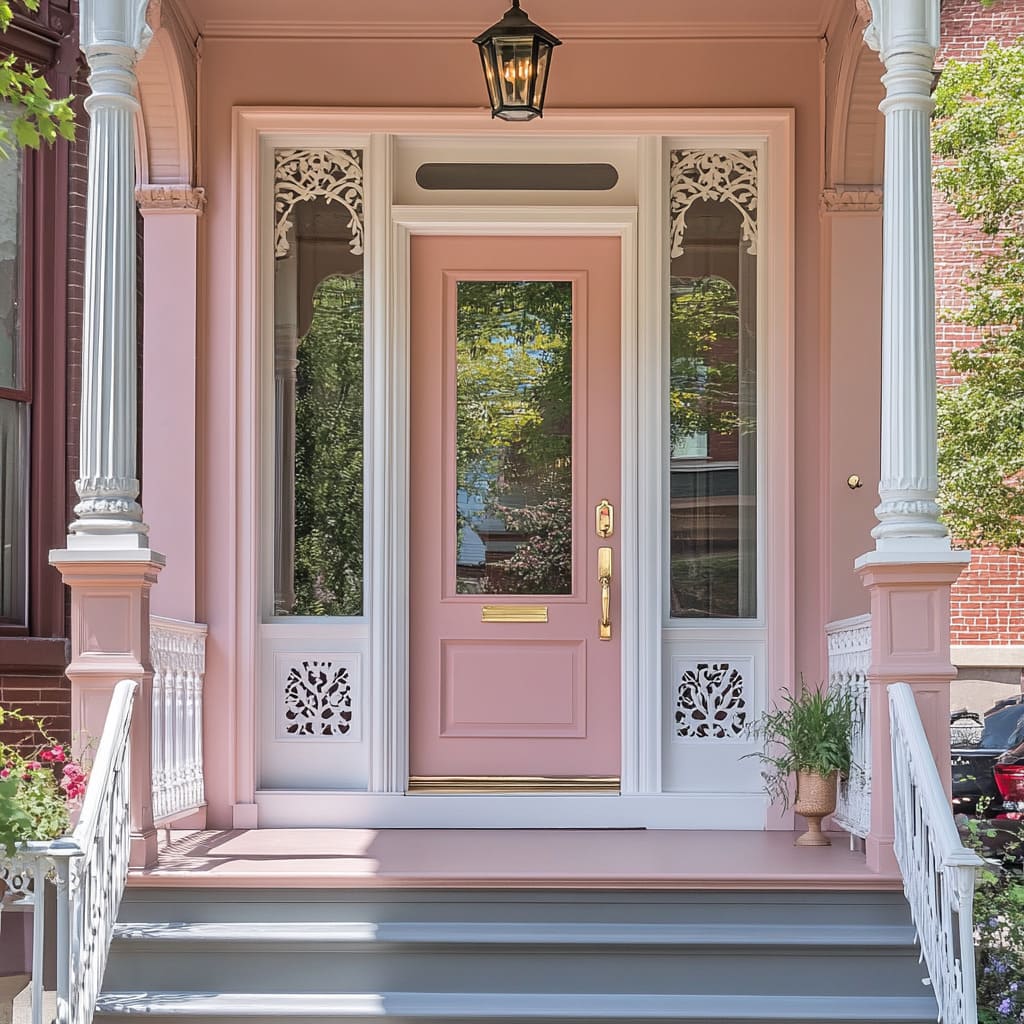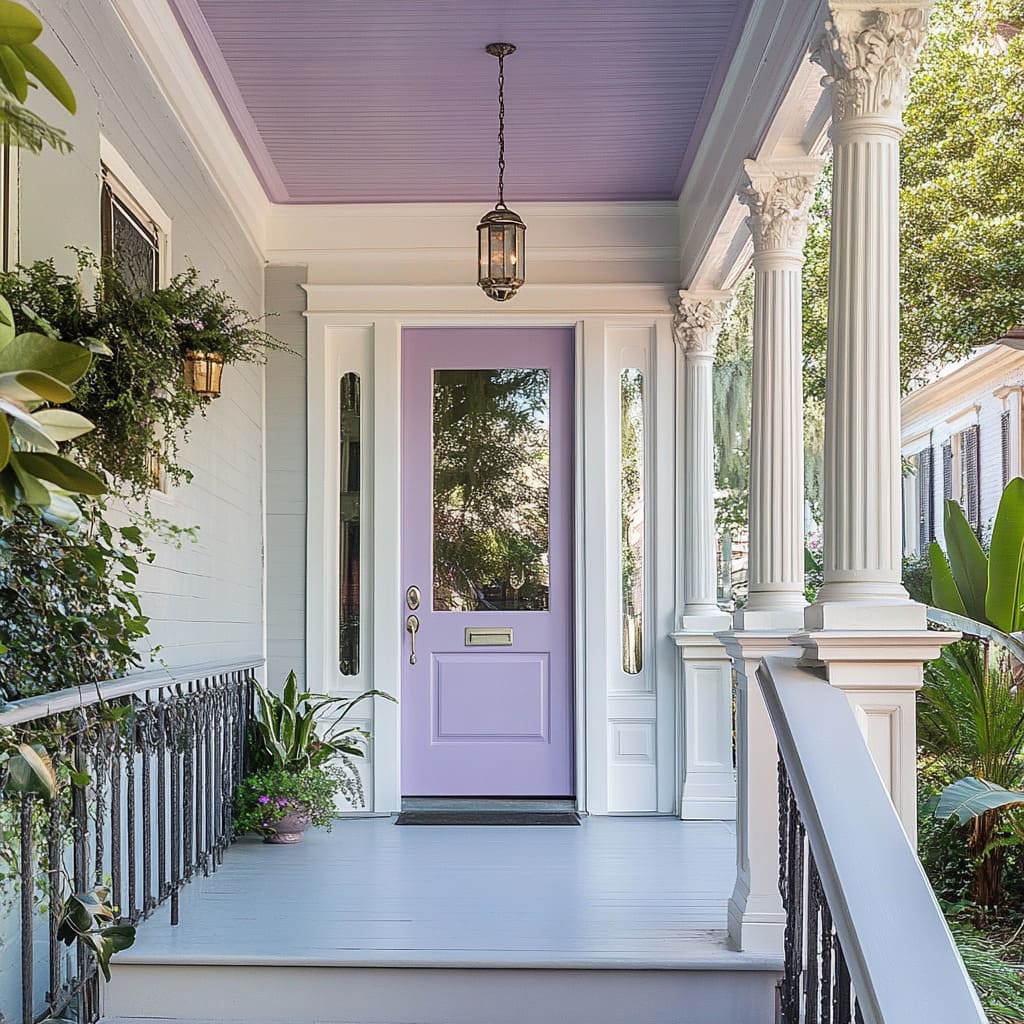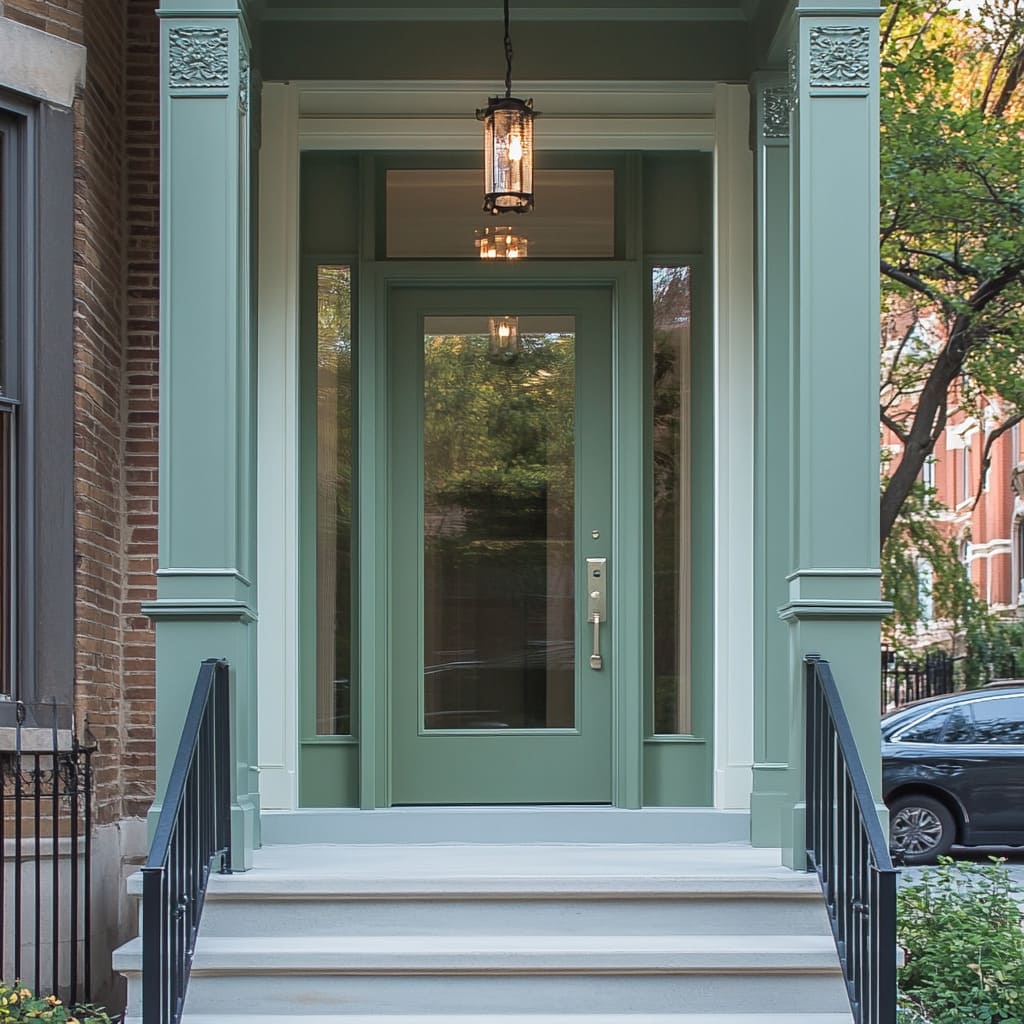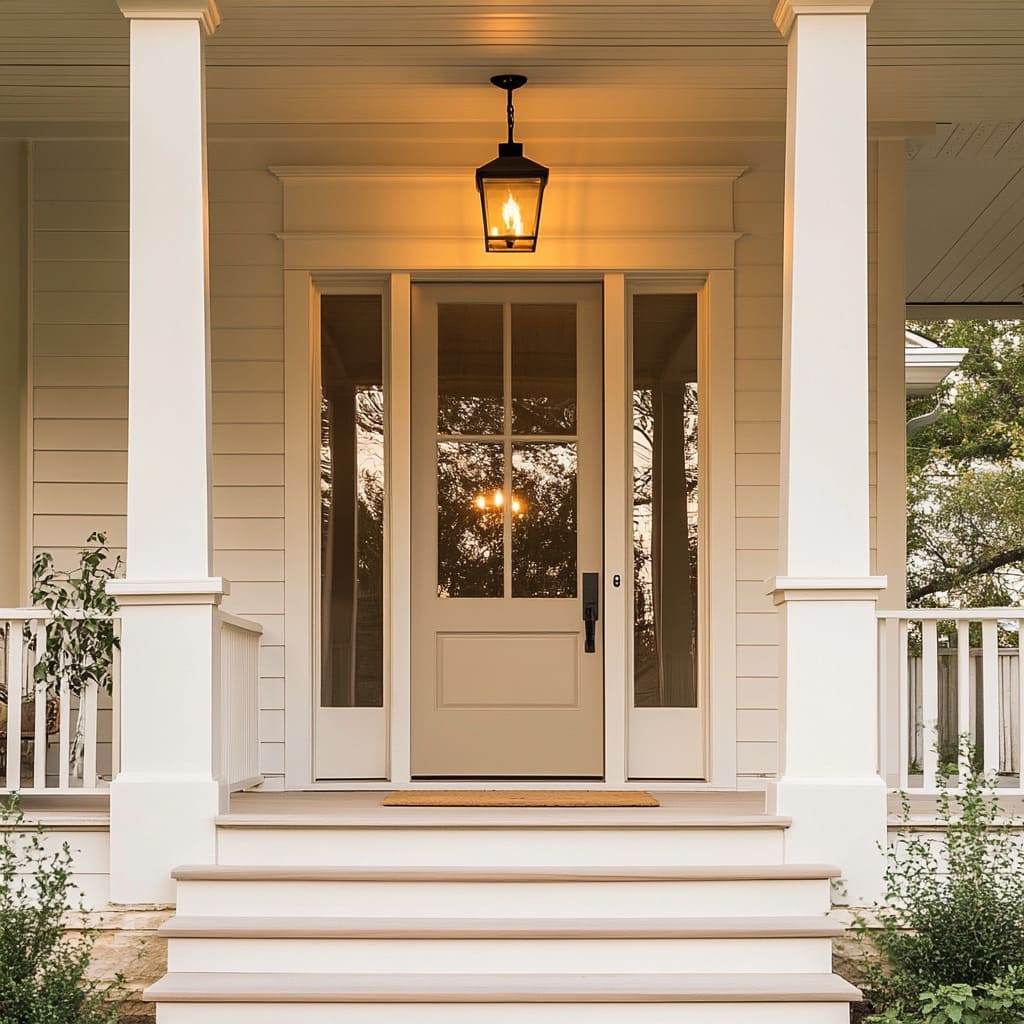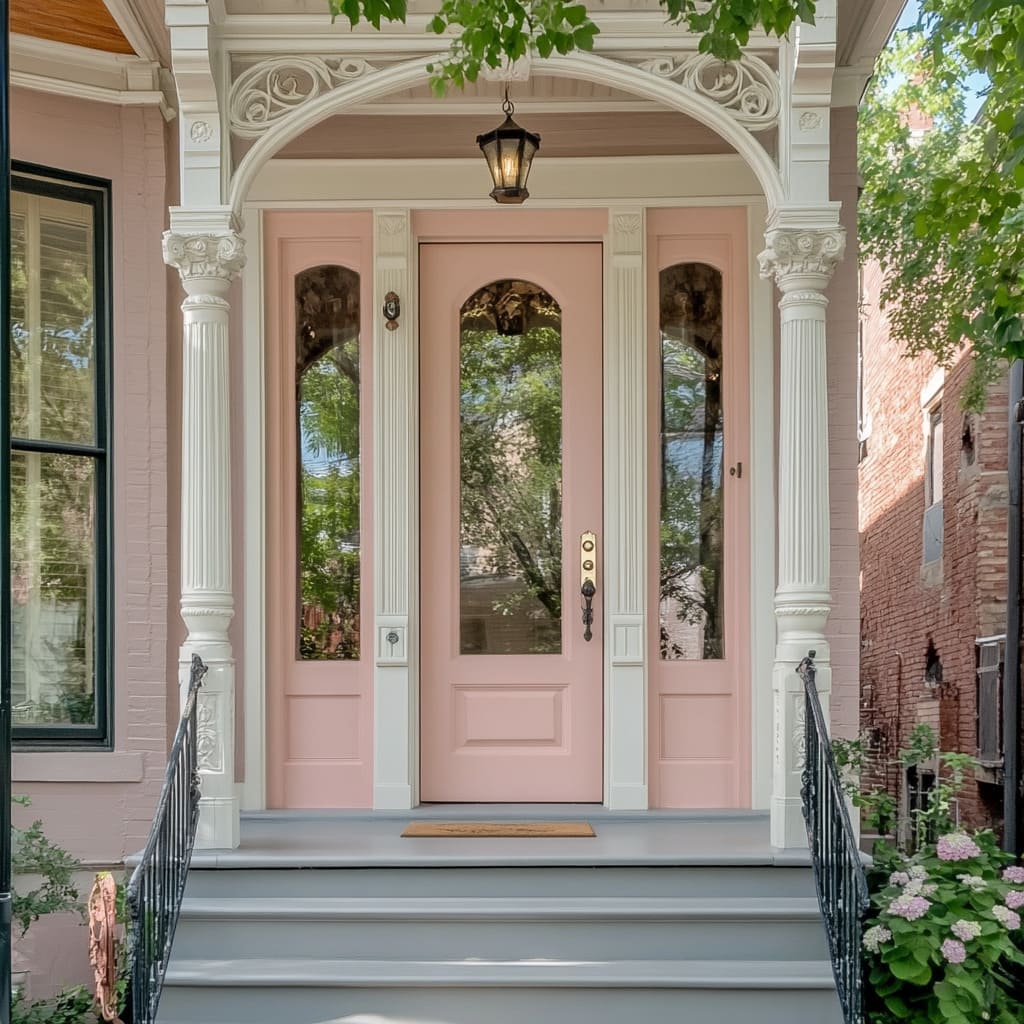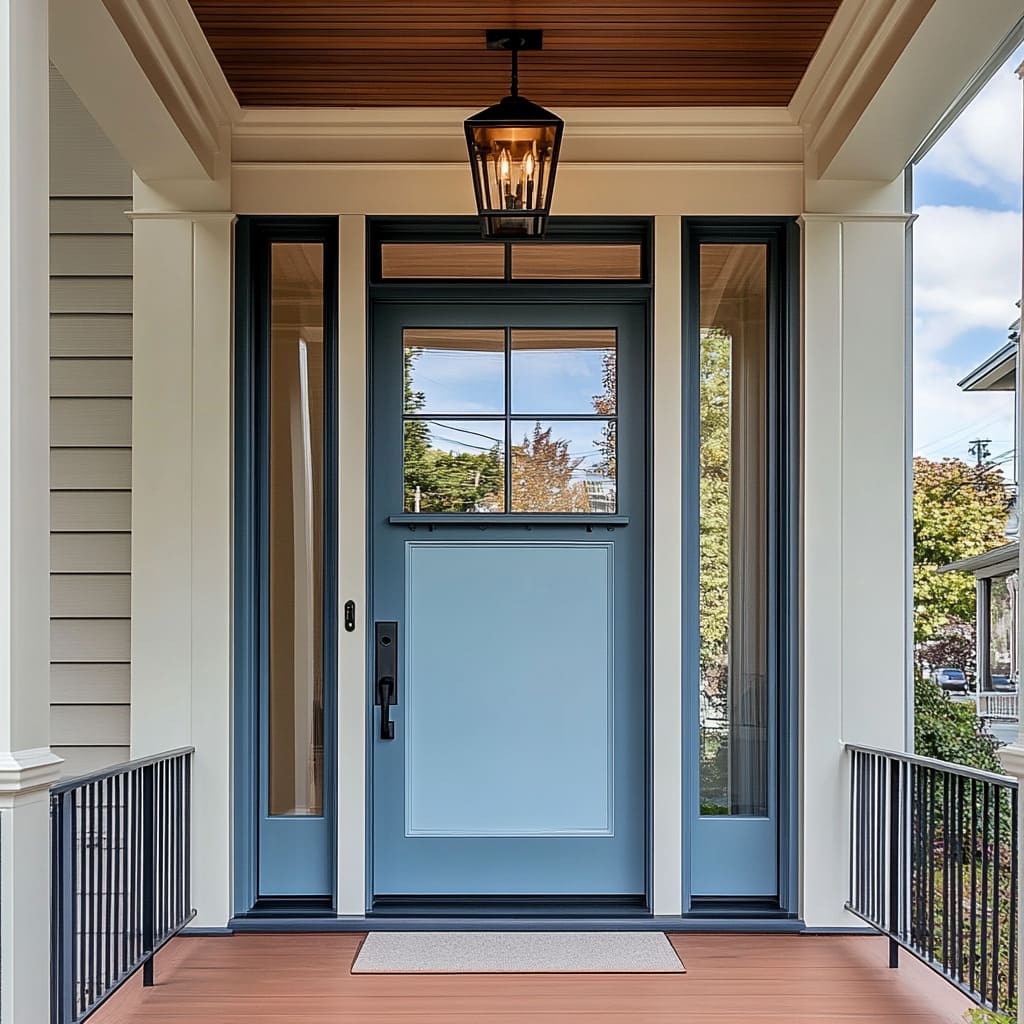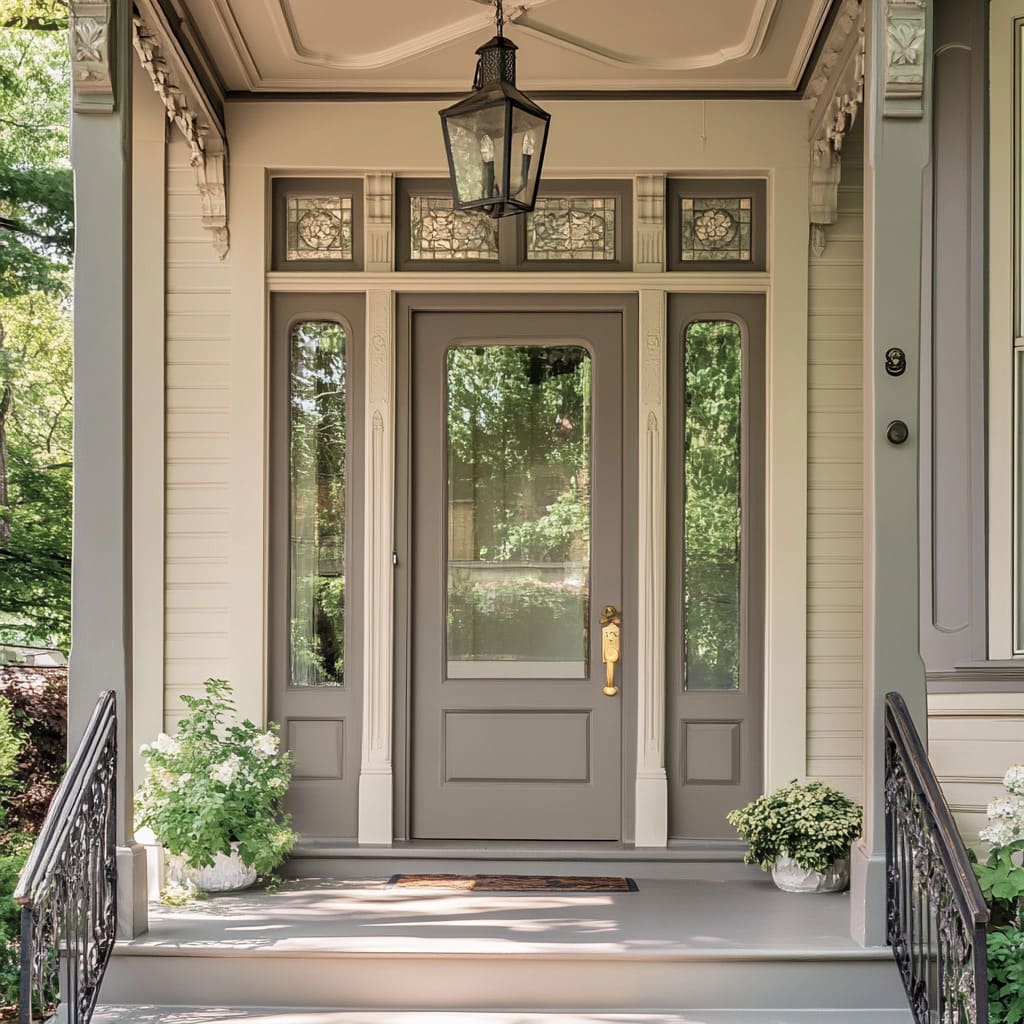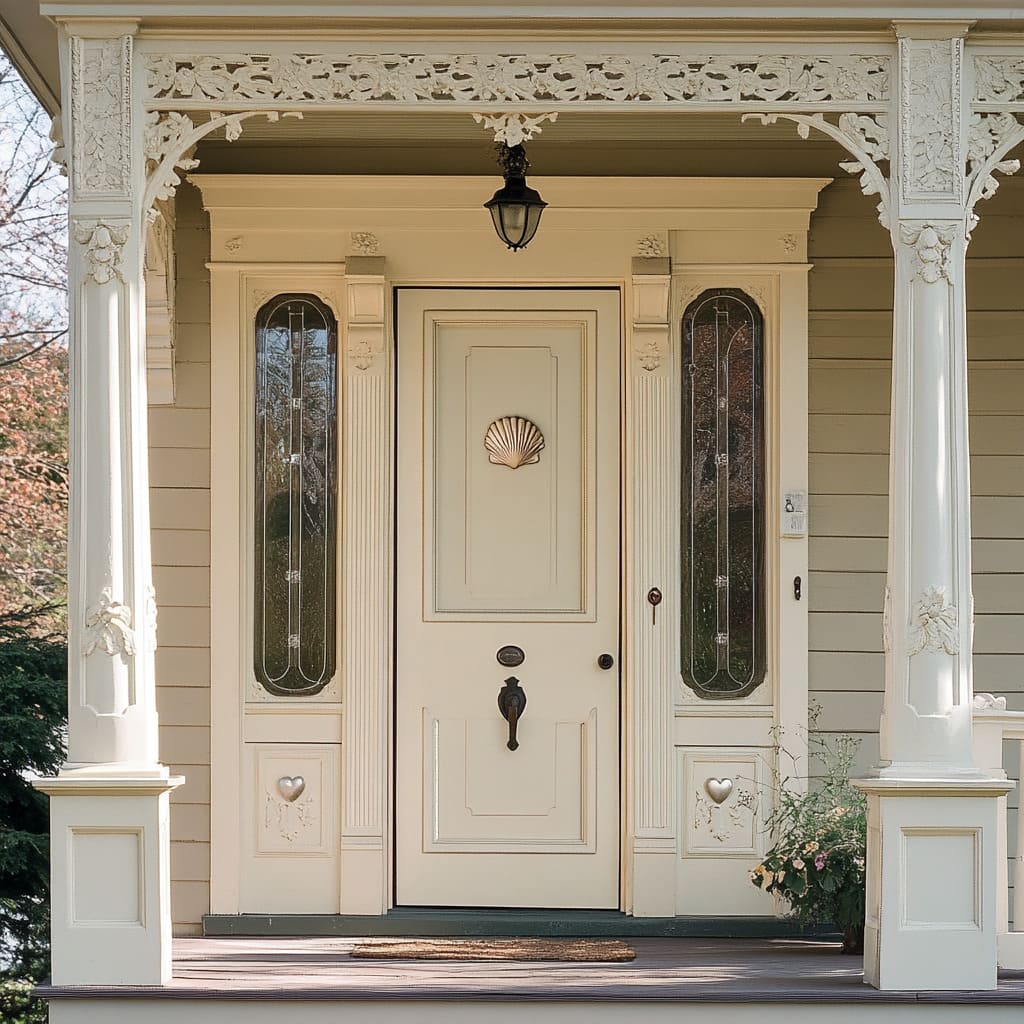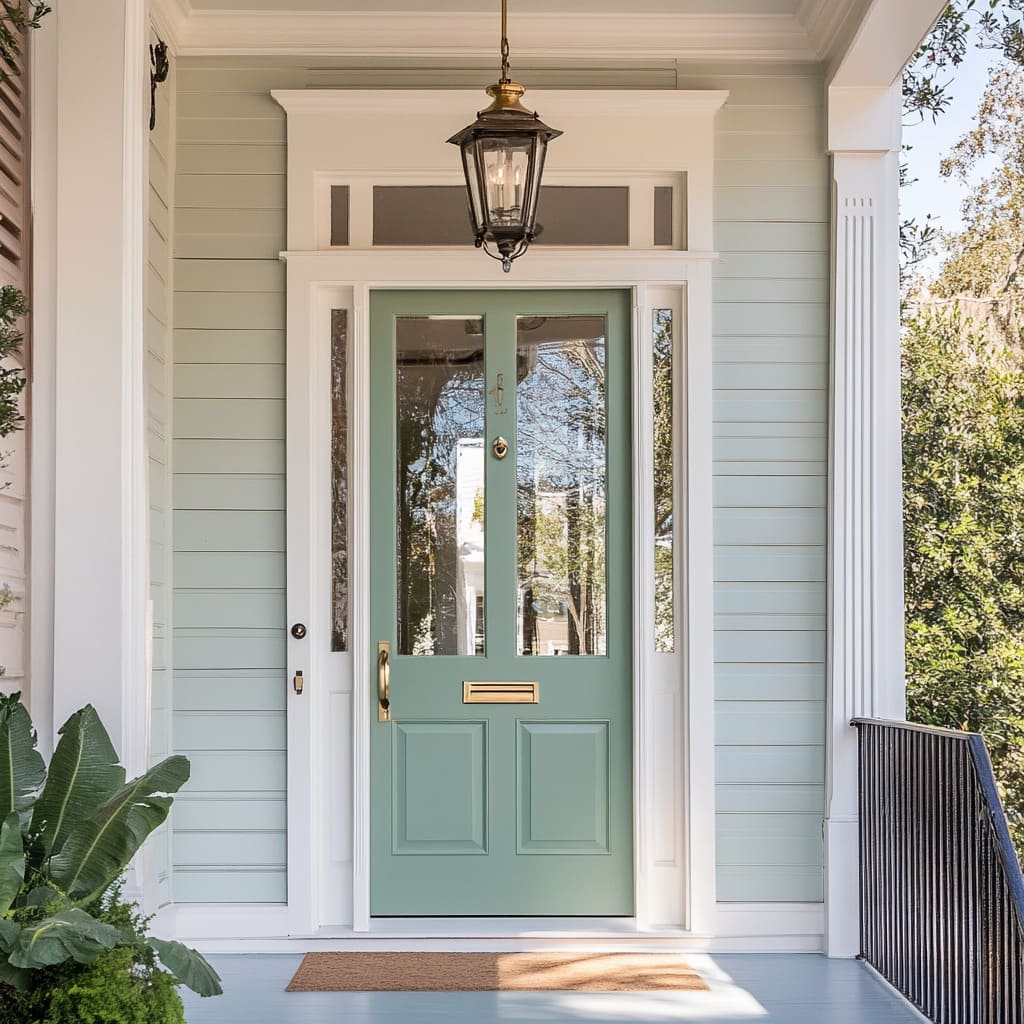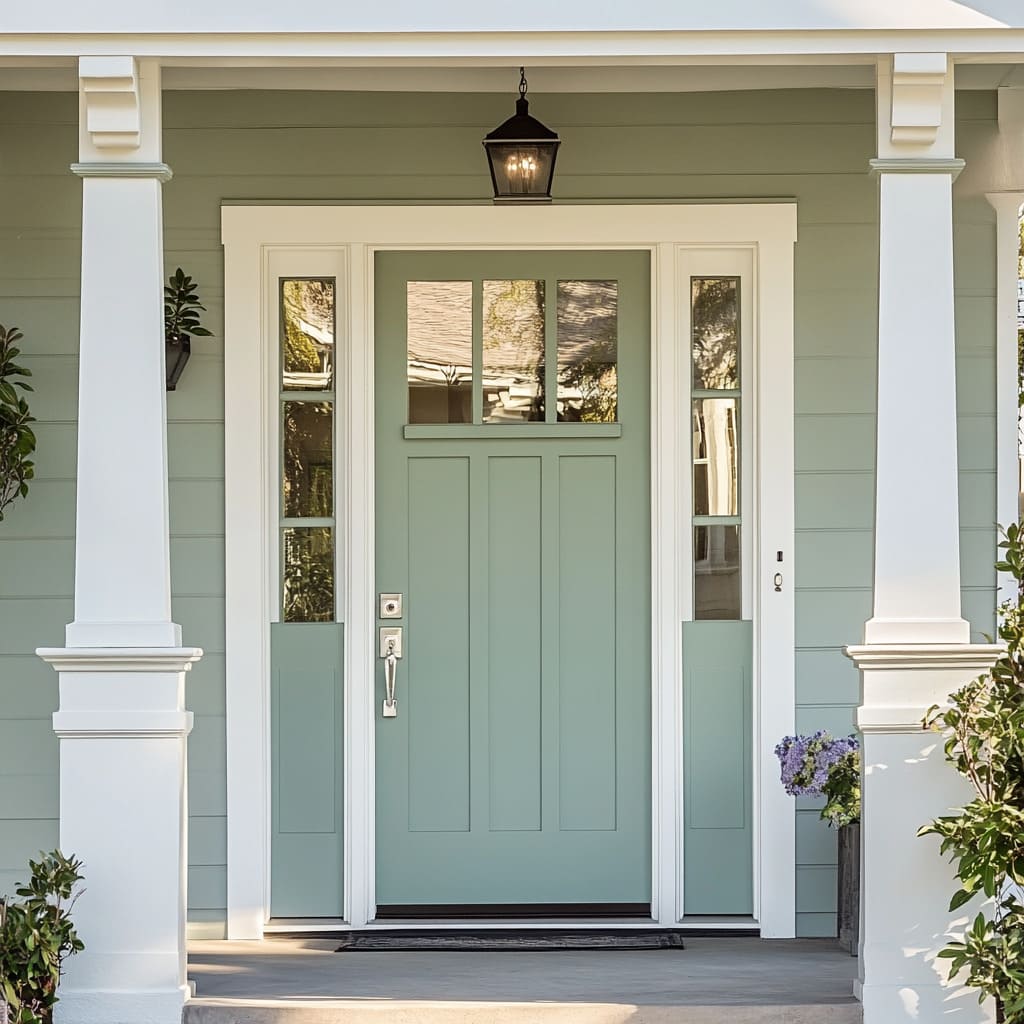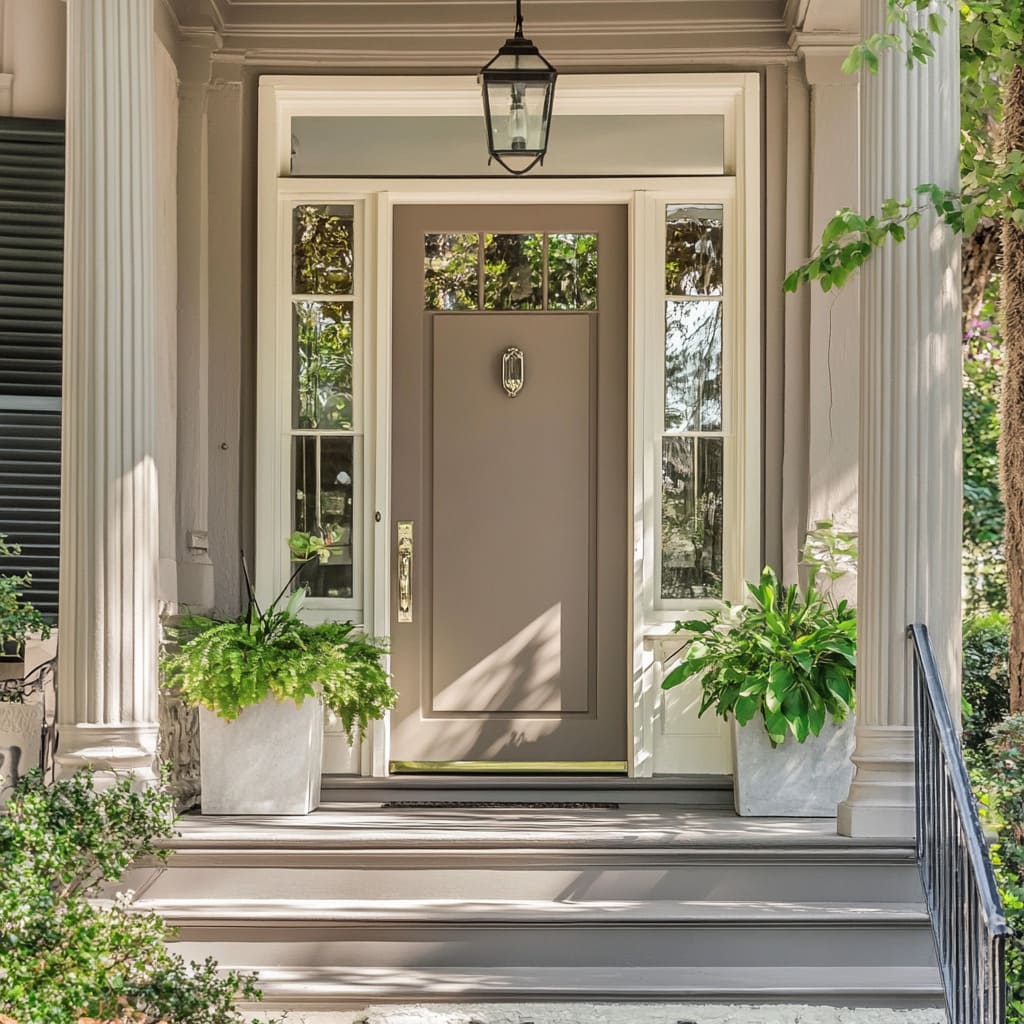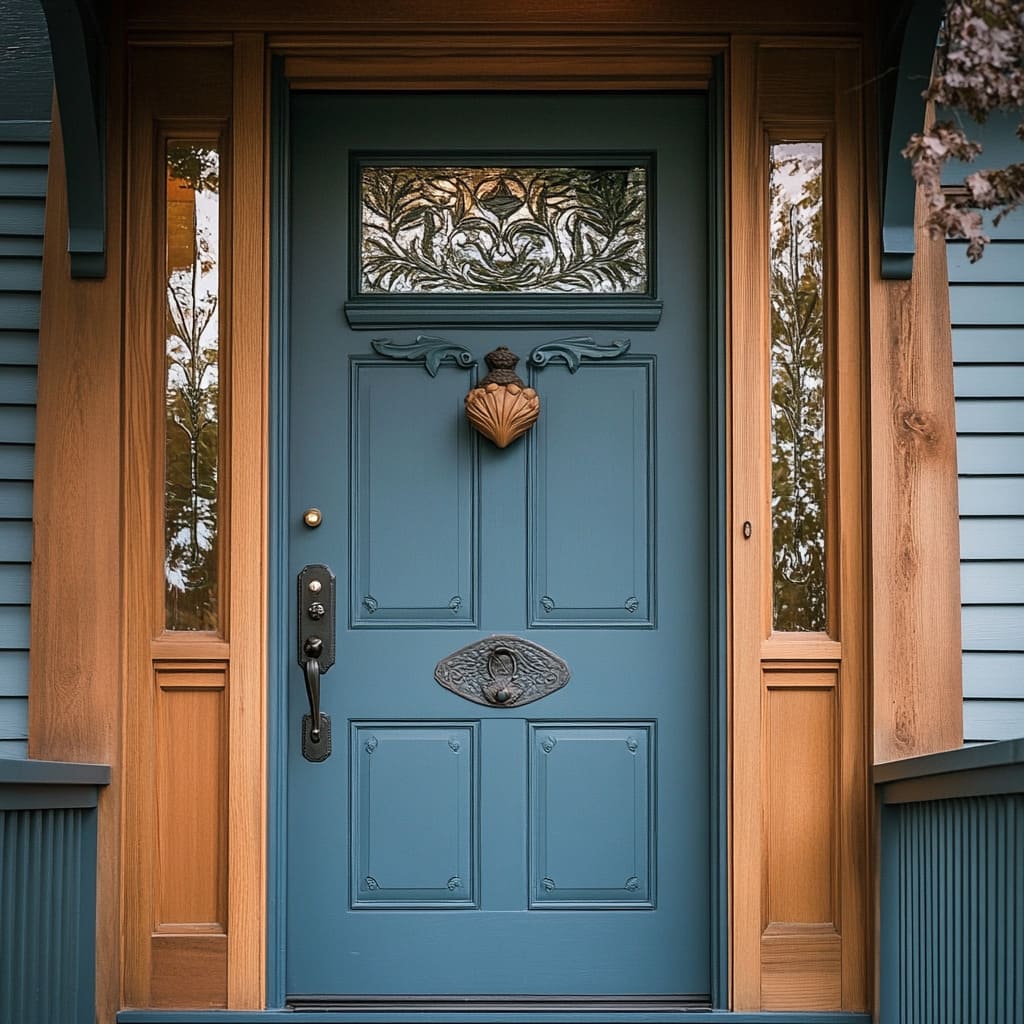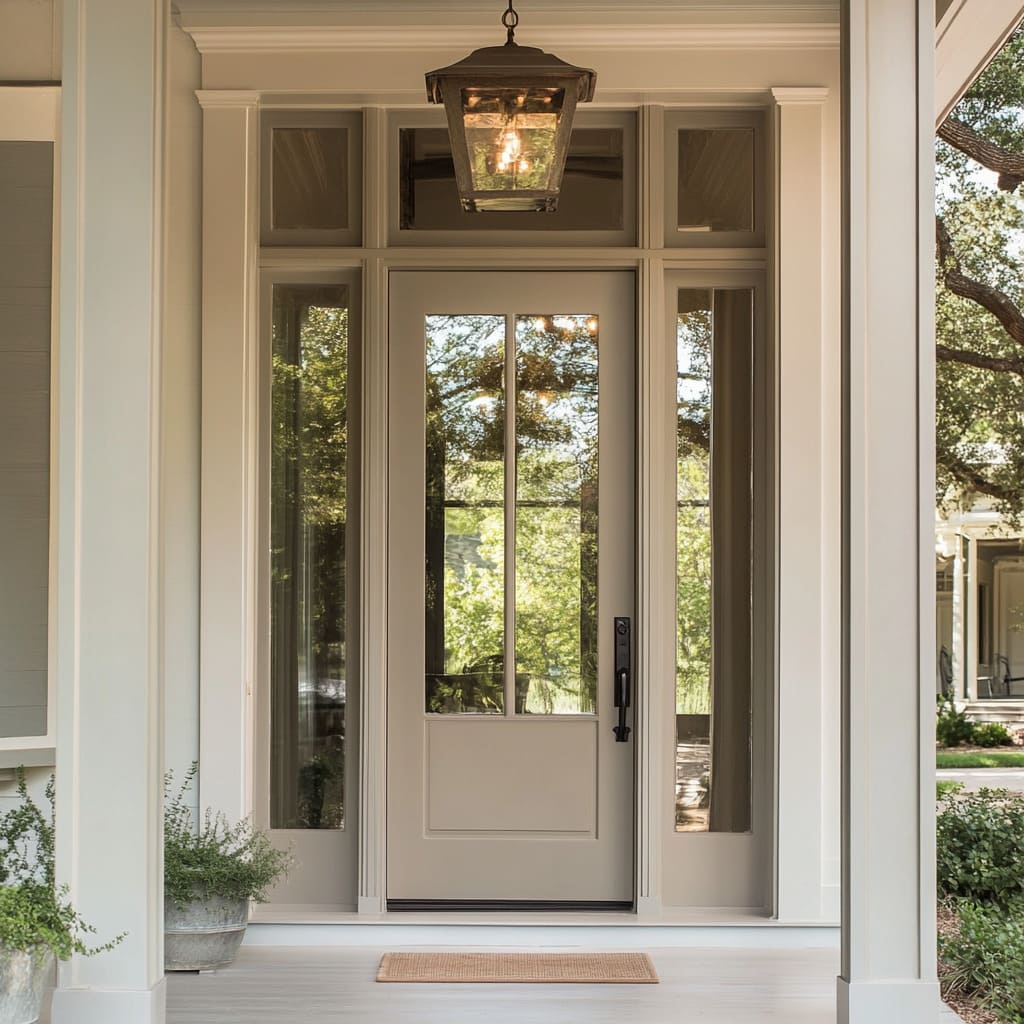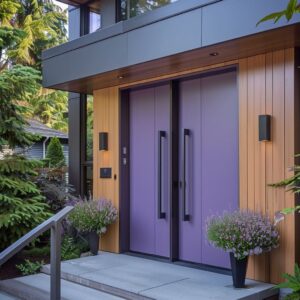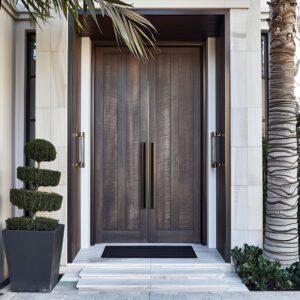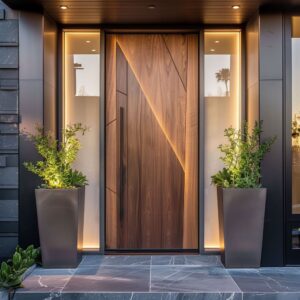The Victorian style front door remains an enduring symbol of architectural beauty and craftsmanship. These doors, often adorned with intricate details and rich in historical charm, capture the essence of a bygone era while still resonating with homeowners today.
They are more than just functional elements; they serve as a statement piece that sets the tone for the entire home. A Victorian front door is often the first thing that catches the eye when approaching a house.
Its ornate design and bold presence immediately draw attention, making it the focal point of the home’s exterior. The door’s role extends beyond mere functionality; it reflects the homeowner’s appreciation for tradition, detail, and the unique character that Victorian architecture offers
In the world of Victorian house front door ideas, there are key elements that define these entrances and contribute to their distinctive aesthetic. These features, from decorative glass inserts to elaborate woodwork, combine to create an entrance that is both welcoming and visually striking.
Understanding the significance of these elements and their impact on the overall design is crucial for anyone looking to enhance their home with a Victorian wood front door
Architectural Significance of Victorian Front Doors
Historical Context
The Victorian era, spanning from the mid-19th to early 20th century, was a time of rapid industrialization and significant social change. This period saw the rise of a distinct architectural style, characterized by its ornate detailing, asymmetry, and eclectic influences.
Victorian architecture embraced a wide range of elements, from Gothic to Italianate, which were often combined in creative and innovative ways
The influence of Victorian architecture on front door design is particularly evident in the emphasis on craftsmanship and detail. During this time, doors were not merely entry points but artistic expressions that reflected the homeowner’s status and taste.
The Victorian front door, with its intricate carvings, stained glass panels, and bold hardware, became a defining feature of homes from this period
In American homes, the Victorian style front door held significant cultural and architectural importance. These doors were often grand and imposing, serving as a clear indication of the home’s interior elegance and the family’s social standing.
The use of high-quality materials and the attention to detail in their construction made these doors a lasting symbol of the era’s architectural grandeur
Key Architectural Features
The key elements that define Victorian front doors include a combination of classical and ornate details that create a sense of grandeur and sophistication. One of the most recognizable features is the use of fluted columns, often paired with intricate capitals that draw the eye upwards and frame the entrance in a way that exudes stateliness.
Another characteristic feature is the ornate trim that often surrounds the door. This trim can include everything from decorative moldings to carved wood panels, all designed to add depth and visual interest.
These elements are not just decorative; they also help to create a sense of proportion and balance that is essential to Victorian design
Decorative brackets and overhangs are also common in Victorian front door ideas, adding both functionality and aesthetic appeal. These features provide shelter from the elements while also enhancing the overall design with their detailed patterns and shapes.
The use of symmetry in the placement of these elements is key, as it reinforces the formal and structured nature of Victorian architecture
The importance of symmetry and proportion cannot be overstated in Victorian door design. Whether through the alignment of sidelights and transom windows or the careful placement of hardware, every detail is considered to ensure a harmonious and balanced appearance.
This attention to detail is what gives Victorian doors their timeless appeal and enduring charm. In conclusion, a Victorian front door is more than just an entrance; it is a carefully crafted work of art that embodies the principles of Victorian architecture.
Its design reflects a commitment to beauty, tradition, and craftsmanship, making it a striking and essential feature of any home that seeks to capture the elegance of this iconic architectural style
Color Choices and Their Impact
Traditional and Contemporary Color Palettes
Victorian style doors are well known for their distinctive color choices, which play a crucial role in defining the character and aesthetic of the home. Traditionally, these doors were painted in deep, rich tones that complemented the ornate details and craftsmanship of the era.
Colors like deep reds, forest greens, and classic black were popular choices, each bringing a sense of dignity and gravitas to the entrance. A black Victorian front door, for example, exudes a timeless elegance that continues to be a favored option even in modern interpretations
Pastel shades also found their place in the Victorian color palette, particularly in homes that embraced a lighter, more whimsical approach to design. Soft blues, lavender, and muted yellows were used to add a touch of brightness and cheerfulness, especially in homes located in coastal or countryside settings.
These lighter tones provided a gentle contrast to the darker, more somber hues typically associated with the Victorian era
In modern times, Victorian style external doors have seen a resurgence in popularity, with homeowners seeking to balance historical integrity with contemporary color trends. While traditional deep tones remain a strong choice, there has been an increase in the use of more unexpected colors that still respect the architectural roots of the design.
Colors like slate gray, navy blue, and even soft sage green are being used to give Victorian doors a fresh, updated look while maintaining their classic appeal
The key to successfully incorporating contemporary colors into Victorian door front designs lies in understanding the balance between tradition and modernity. The color should enhance the intricate details and craftsmanship of the door, rather than overshadowing them.
This ensures that even with a modern twist, the door remains true to its Victorian heritage
Enhancing Curb Appeal Through Color
Choosing the right color for a Victorian door can significantly impact a home’s curb appeal. The front door is often the first thing that visitors and passersby notice, making it a critical element in creating a lasting first impression.
The color of the door should not only reflect the homeowner’s personal style but also complement the overall color scheme of the house and its surroundings
When selecting a color, it’s essential to consider the psychological and aesthetic effects that different hues can have. Darker colors like deep blue or black convey a sense of formality and elegance, making the entrance feel more stately and impressive.
These colors can also make the door appear more substantial, adding to the sense of security and sturdiness. In contrast, lighter shades like pale yellow or mint green can make the entrance feel more inviting and approachable, offering a warm welcome to visitors
For those seeking to make a bold statement, choosing an unexpected color can add a unique touch to the entrance while still honoring the Victorian style. A well-chosen color can highlight the door’s architectural details, such as stained glass panels or ornate carvings, drawing attention to the craftsmanship that makes Victorian style doors so distinctive.
In the end, the right color can transform a Victorian front door from merely functional to a true centerpiece of the home’s exterior. It’s about finding that perfect balance between standing out and blending in, ensuring the door enhances the overall aesthetic while still being true to its Victorian roots
Intricate Detailing and Craftsmanship
Stained Glass and Leaded Panels
Stained glass and leaded panels are among the most defining features of Victorian style doors. These intricate glass designs add a layer of artistry and color, turning the door into a visual highlight of the home.
The use of stained glass during the Victorian era was not only decorative but also served practical purposes, such as allowing light to enter while maintaining privacy
Common motifs found in Victorian stained glass include floral patterns, geometric shapes, and intricate scrolls. These designs were often created using rich, jewel-toned colors like ruby red, emerald green, and sapphire blue, which would catch the light and create a vibrant display.
The artistry involved in crafting these panels adds to the overall sense of grandeur and detail that characterizes Victorian door fronts
Modern interpretations of Victorian doors often include leaded glass panels that mimic the traditional look while using contemporary materials. This allows homeowners to achieve the same visual impact while benefiting from improved durability and energy efficiency.
Whether through authentic restoration or modern replication, stained glass remains a vital element in capturing the essence of Victorian door design
Ornate Hardware and Finishes
The hardware used on Victorian doors is another critical component that contributes to their overall aesthetic and functionality. Traditional brass hardware, including door handles, knockers, and mail slots, adds a touch of opulence and craftsmanship.
These elements are often ornate, featuring detailed engravings or sculptural forms that enhance the door’s visual appeal
For instance, a Victorian door front may feature a large, polished brass knocker shaped like a lion’s head or an elaborate door handle with intricate scrollwork. These details are not just decorative; they serve to reinforce the door’s role as a key feature of the home’s exterior.
The choice of hardware can significantly influence the overall look and feel of the door, making it essential to select pieces that complement the door’s design and color
In addition to traditional brass, modern versions of Victorian style external doors may incorporate other finishes, such as antique bronze or aged pewter, to achieve a different aesthetic while still maintaining the door’s historical character. The finish of the hardware should harmonize with the overall color scheme and design of the door, ensuring a cohesive and polished appearance
Decorative Carvings and Molding
Decorative carvings and moldings are integral to the design of Victorian doors, adding depth, texture, and a sense of artistry. These elements are often found around the edges of the door panels, as well as on the surrounding frame and trim.
The carvings can range from simple beveled edges to more elaborate designs featuring floral motifs, scrolls, and geometric patterns
The role of these carvings and moldings is twofold: they enhance the visual appeal of the door while also highlighting the craftsmanship involved in its creation. A well-carved Victorian door not only stands out for its beauty but also tells a story of the time and effort invested in its design.
These details can make a significant difference in the overall impact of the door, turning it from a simple entryway into a work of art
Modern homeowners looking to replicate the Victorian aesthetic may choose to include similar carvings and moldings on their doors, whether through custom woodworking or high-quality reproductions. These details can be further highlighted with a carefully chosen paint or stain, ensuring that the craftsmanship is fully appreciated and that the door remains a standout feature of the home
Complementary Elements Surrounding the Door
Porches and Overhangs
Victorian homes are often distinguished by their grand entrances, where porches and overhangs play a pivotal role in framing the front door. These elements are not merely functional; they are architectural statements that enhance the overall aesthetic and provide a sense of grandeur and shelter
Porches in Victorian homes often feature key elements like fluted columns, intricate balusters, and beadboard ceilings, all of which contribute to the elegance of the entrance. The columns, typically painted in crisp white or matching the trim of the house, provide a stately framework that draws attention to the front door.
These columns often boast detailed capitals, adding a touch of classical refinement to the structure
Balusters are another important feature, often running along the sides of the porch. These are not just safety features but also serve as decorative components that add rhythm and texture to the entrance.
Whether simple or ornate, they are integral to maintaining the Victorian character of the home
Beadboard ceilings are commonly used in Victorian porches, offering a subtle yet effective way to add texture and interest overhead. The vertical grooves of beadboard create a visual continuity that complements the vertical lines of the columns and balusters, tying the entire porch together into a cohesive design.
These features combined ensure that the porch is not just an entrance but an extension of the home’s architectural story, framing the front door—whether it’s a traditional solid wood Victorian front door or a more modern composite version—in a way that highlights its importance and beauty
Lighting Fixtures
Lighting fixtures are crucial in Victorian entrances, serving both functional and aesthetic purposes. The right lighting can transform a simple entryway into a welcoming beacon that highlights the door’s architectural details and enhances the home’s curb appeal
Lantern-style lighting fixtures are a hallmark of Victorian entrances. These fixtures, often suspended from the porch ceiling or mounted on either side of the door, cast a warm, inviting glow that not only illuminates the path but also adds to the overall ambiance of the entrance.
The design of these lanterns typically mirrors the ornate style of the Victorian era, featuring intricate metalwork and glass panes that might echo the patterns found in a Victorian stained glass front door
Appropriate lighting does more than just brighten the entrance; it creates a focal point that draws the eye to the door and its surrounding features. By strategically placing lights to highlight architectural details such as the trim, columns, or even the stained glass panels, homeowners can enhance the aesthetic appeal of their Victorian door while also ensuring safety and visibility
Landscaping and Floral Accents
Landscaping plays a significant role in softening the structured lines of Victorian entrances, adding a natural element that enhances the overall beauty of the home. Potted plants, shrubs, and carefully placed greenery can transform a formal entrance into a welcoming, vibrant space
Potted plants are a versatile option, allowing homeowners to introduce greenery in a controlled and flexible manner. These plants can be positioned on either side of the door or along the steps, creating a symmetrical arrangement that complements the architectural balance of the entrance.
Choosing pots that match the color scheme of the home or the door itself can further tie the design elements together
Shrubs and ground cover planted near the base of the porch can also enhance the Victorian aesthetic. These plants should be selected with care, ensuring they complement the style of the home and do not overwhelm the entrance.
Classic choices include boxwoods, ferns, and hydrangeas, all of which add texture and color without detracting from the door’s presence
For homes with Victorian style external doors, selecting plants that mirror the colors found in the door or its stained glass panels can create a cohesive and visually pleasing effect. The greenery not only adds life to the entrance but also frames the door in a way that enhances its prominence and charm
By thoughtfully incorporating these complementary elements—porches, lighting fixtures, and landscaping—homeowners can create an entrance that not only highlights the beauty of their Victorian door but also enhances the overall curb appeal of their home. Whether the door is a traditional solid wood design or a modern composite victorian front door, these surrounding features play a crucial role in creating a welcoming and aesthetically pleasing entryway
Conclusion
Victorian front doors are much more than just functional entrances; they are a blend of artistry, history, and architectural craftsmanship. The essential features that define these doors—such as ornate carvings, stained glass panels, and detailed hardware—contribute to their timeless appeal.
Whether it’s the stately presence of a blue Victorian front door or the intricate beauty of wooden front doors in Victorian style, these elements come together to create a striking visual impact that has stood the test of time
The lasting influence of Victorian design on modern front door aesthetics is evident in the continued popularity of these styles. Today, homeowners often seek to incorporate the elegance and sophistication of Victorian doors while benefiting from modern materials and techniques.
For example, a composite door on a Victorian house can offer the charm of traditional design with the durability and energy efficiency that modern technology provides
Creating a striking entrance involves more than just choosing the right door; it’s about embracing the principles of Victorian design and making them your own. By carefully selecting details like color, materials, and surrounding architectural elements, homeowners can achieve an entrance that reflects both the grandeur of the past and their personal style.
Whether you opt for a traditional wooden Victorian front door or a contemporary interpretation, the key is to ensure that the entrance not only complements the home’s architecture but also enhances its overall character and curb appeal

